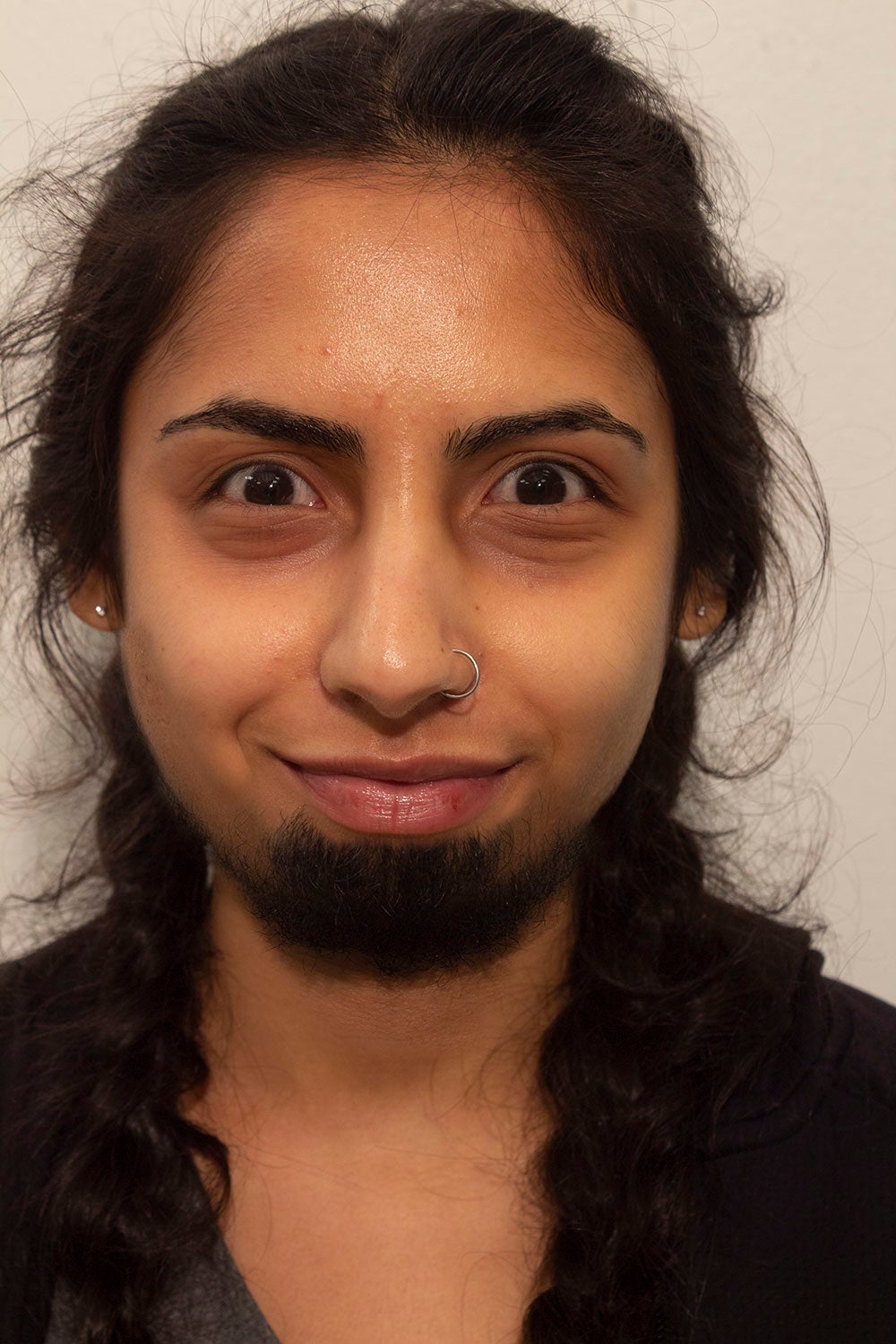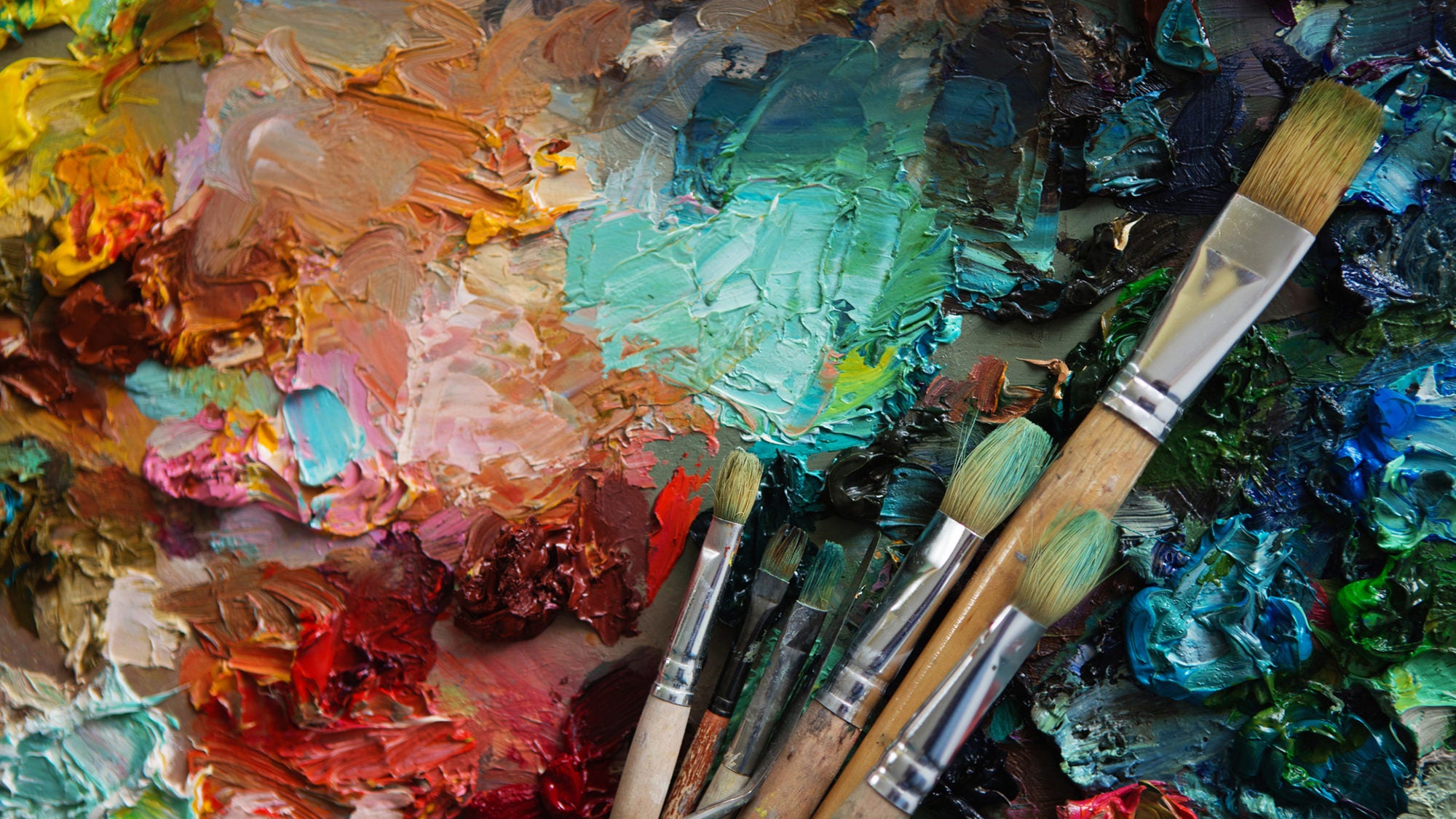
Spring 2021 Course Guide
Welcome to the Spring 2021 Course Guide for the Department of Art and Art History!
Most of the courses described here have been specifically adapted for virtual or hybrid learning in 2020-21. Studio Art courses in particular have developed new approaches, with exciting results. In Art History and Art & Museum Studies, a wide array of courses includes several new ones that promise lively inquiry around questions that have become more urgent than ever in 2020.
We invite you to browse all the offerings and let us know if you have any questions. For individual courses, please reach out to the professor. For other questions about your major, minor, or our curriculum more generally, please contact your major advisor or any of us listed below. Department faculty and staff are happy to answer your questions and discuss your options by email or appointment.
Director of Undergraduate Studies in Art History – Prof. Ian Bourland
Director of Undergraduate Studies in Studio Art – Prof. John Morrell
Director of MA Program in Art and Museum Studies – Prof. Lisa Strong
Department Chair – Prof. Al Acres
Department Coordinator – Emily Aufuldish
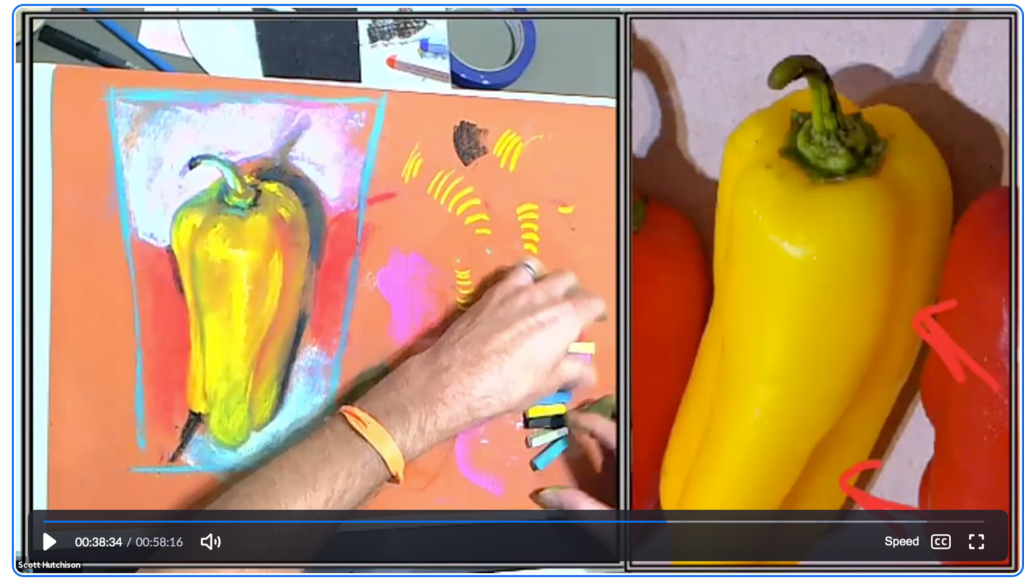
Professor Scott Hutchinson teaching color theory with pastels with a multi-camera Zoom classroom during Instructional Continuity.
Studio Art Courses
Design
ARTS 100-03 – Design I

Camouflage Project: In Design I, we cover color mixing and color theory. In this project, by Elena Zheng, the students were asked to think about the idea of camouflage and how to integrate two or more natural or man made objects by thinking about their color placement and arrangement.
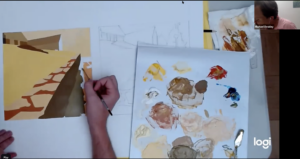
Experimental color compositions: In this project (seen here: Professor Dowley’s demonstration) students use their own photographs of architectural spaces to develop two simplified color compositions. One of the compositions will be monochromatic (one primary color is chosen as a starting color) and the other is developed from complimentary colors.

Paper Cutting: Students learn to cut intricate designs using only paper and x-acto knives. Students develop their images from their own photography and from drawings.(student work: Cornelia Thomas)
ARTS 100-03 — Design I is an introductory art studio course. Using drawing, painting, sculpture and photo materials, students learn the principles and elements of design necessary to communicate and express themselves visually. Special topics include collage and papercutting. ARTS 100 is required for all art majors and is recommended for art minors and as an elective for students interested in exploring the discipline of studio art.
This course is taught by Professor Michael Dowley.
ARTS 100-04 – Design I
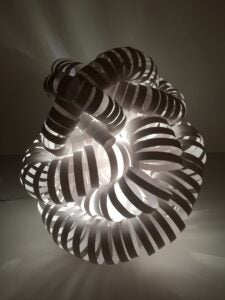
Alexandra Smalto, Paper Luminary Project
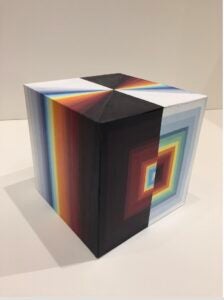
Angela Liu, Color Cube Project

Assignment covering Line and Plane Elements with Repetition and Difference Principles
ARTS 100-04 – Design I focuses on the study of fundamental skills used for making visual art. This includes both conceptual and technical development. The broad goals of the course are to train our eye to understand and refine compositions as a way to communicate ideas visually and create new designs that get past cliche ideas. Additionally we will gain foundational skills and concepts needed for making and analyzing art. This section of Design will focus on creating three-dimensional forms using easy-to-manipulate materials such as paper, cardboard, foam-board and wire. With these materials all of the projects will be achievable in practically any learning environment.
This course is taught by Professor Evan Reed.
Drawing
ARTS 110-01 – Drawing I: Visual Language
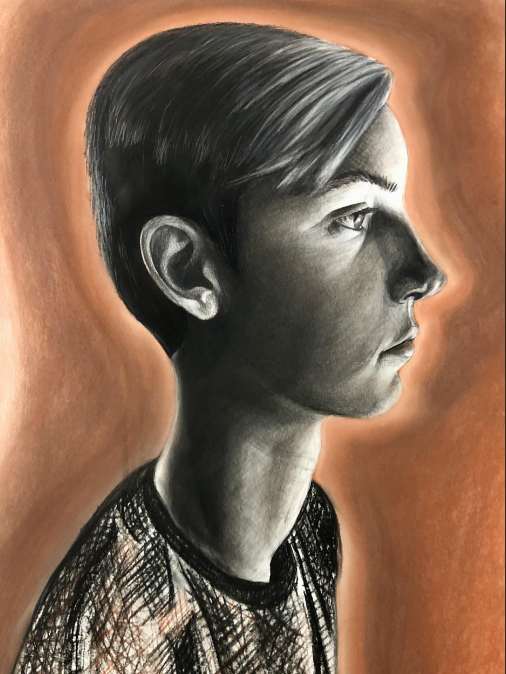
Peris Lopez, Profile Portrait Drawing
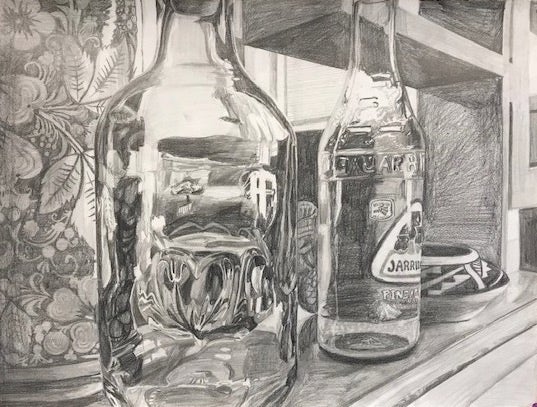
Anastasia Wass, Drawing Glass

Julia Gigante, High Contrast Drawing
ARTS 110-01 – Drawing I: Visual Language Gustav Klimt once said, “Art is a line around your thoughts.” In this course, students will use drawing as a means of creative reflection and as a means to process the world around them. Students will draw inspiration for their work from their personal-history and surrounding environments. They will learn to see the world from a new perspective, and with fresh eyes. This course will begin with foundational material, building step by step in complexity. Students will use checklists to help them to develop and fix line drawing, shading, and composition. Understanding that students have different levels of drawing experience, I work with each student individually to help them improve. Using interactive group critiques and one-on-one feedback from me, all students will gain valuable feedback on their drawings. A variety of drawing processes and techniques will be covered. Subjects covered will include still life, landscape, portraiture, the figure, and architectural perspective drawing. As a remote course, resources will include prerecorded demonstrations, live-recorded demonstrations, slideshow lectures, and short films about artists.
This course is taught by Professor Mark Anderson.
ARTS 110-02 – Drawing I: Visual Language
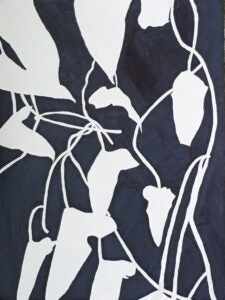
Adam Bozzone, Positive Negative Space Composition
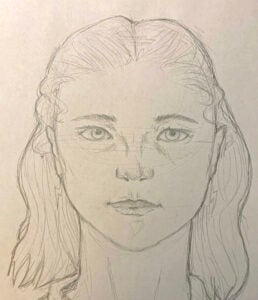
Hunter Spillan, Drawing from Memory
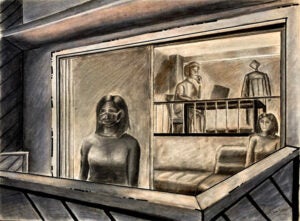
Mark Alabam, Final Project: How the Global Pandemic Affects You and Your World
ARTS 110-02 – Drawing I: Visual Language is a course designed to introduce basic fundamentals of drawing, with an emphasis on perceptive and technical skills. Basic art elements, and principles of art are explored as they relate to graphic expression. Additionally, this course is designed to develop basic drawing skills using a variety of media and techniques, and to become knowledgeable of various topics, and vocabulary in drawing such as line, tone, perspective, proportion, and composition. Another purpose of this course is to develop basic critical skills in visual art, and to expand elements of visual and critical thinking, and visual vocabulary.
This course is taught by Professor Tom Xenakis.
ARTS 110-03 – Drawing I: Visual Language
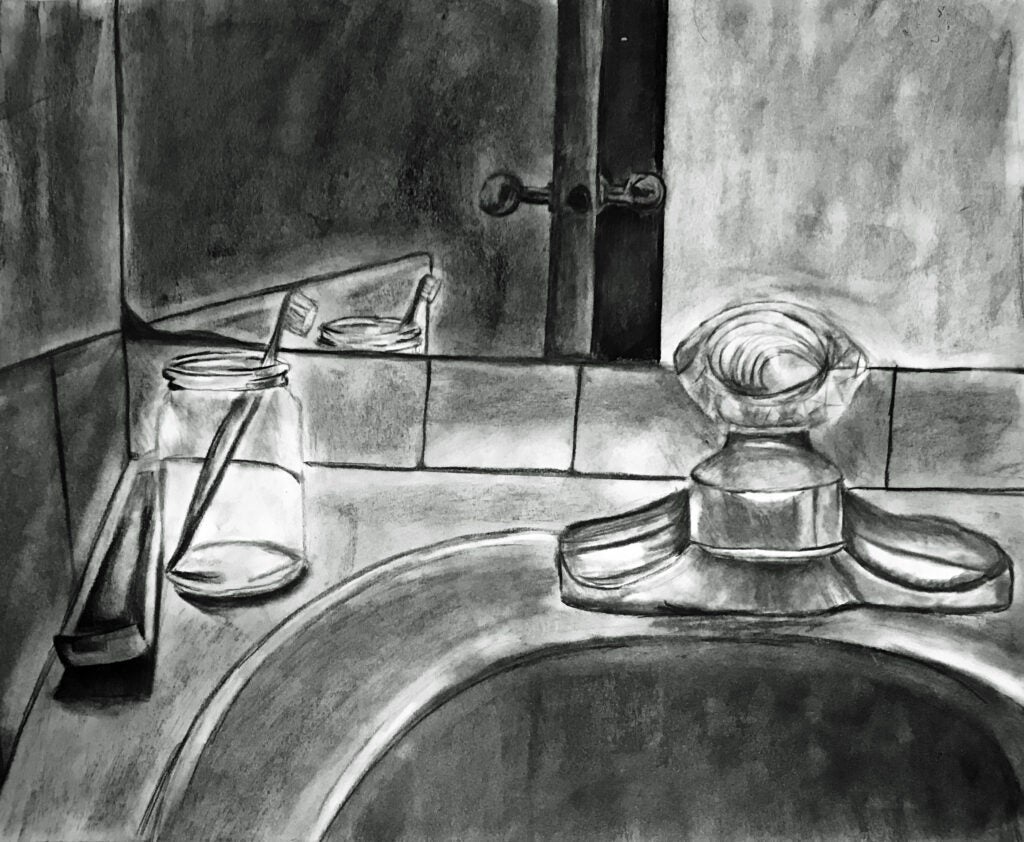
Madison Langdon, Charcoal Value Study

Claire Jin, Fantastical Landscape Perspective Project
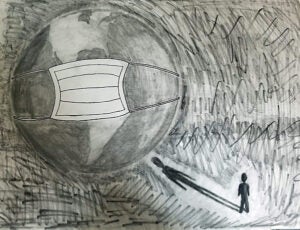
Ian Estevao Final Project: How the Global Pandemic Affects You and Your World
ARTS 110-03 – Drawing I: Visual Language is a course designed to introduce basic fundamentals of drawing, with an emphasis on perceptive and technical skills. Basic art elements, and principles of art are explored as they relate to graphic expression. Additionally, this course is designed to develop basic drawing skills using a variety of media and techniques, and to become knowledgeable of various topics, and vocabulary in drawing such as line, tone, perspective, proportion, and composition. Another purpose of this course is to develop basic critical skills in visual art, and to expand elements of visual and critical thinking, and visual vocabulary.
This course is taught by Professor Tom Xenakis.
ARTS 110-04 – Drawing I: Visual Language
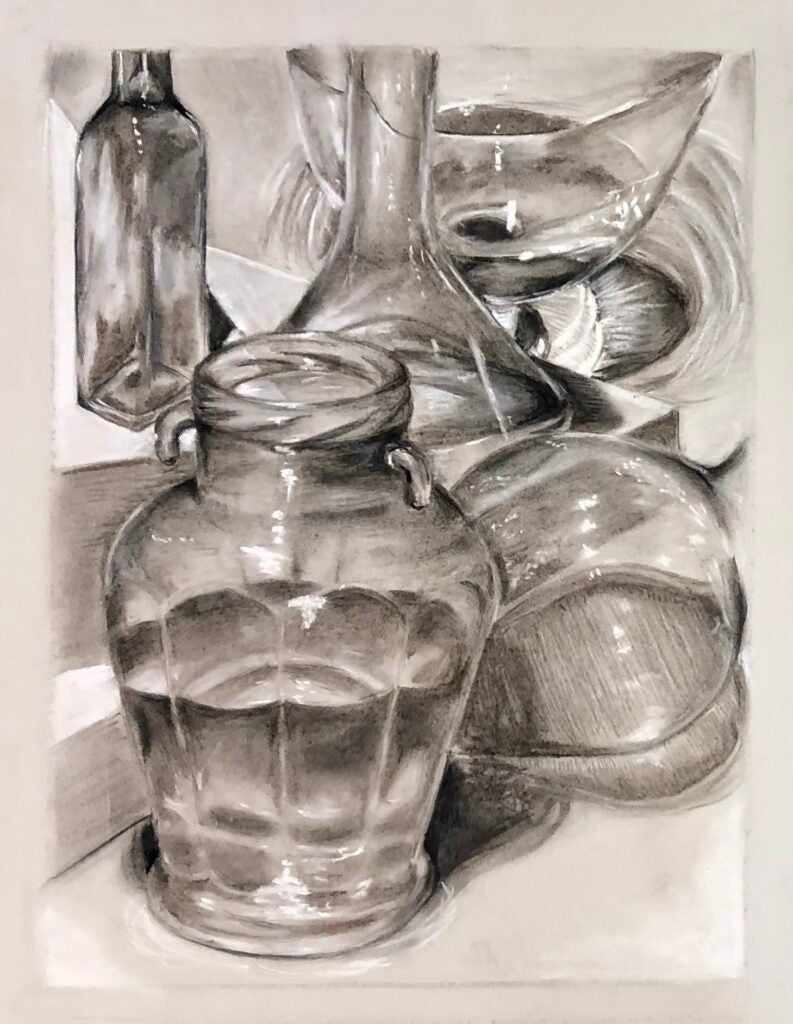
Jenna Royson, Reflections
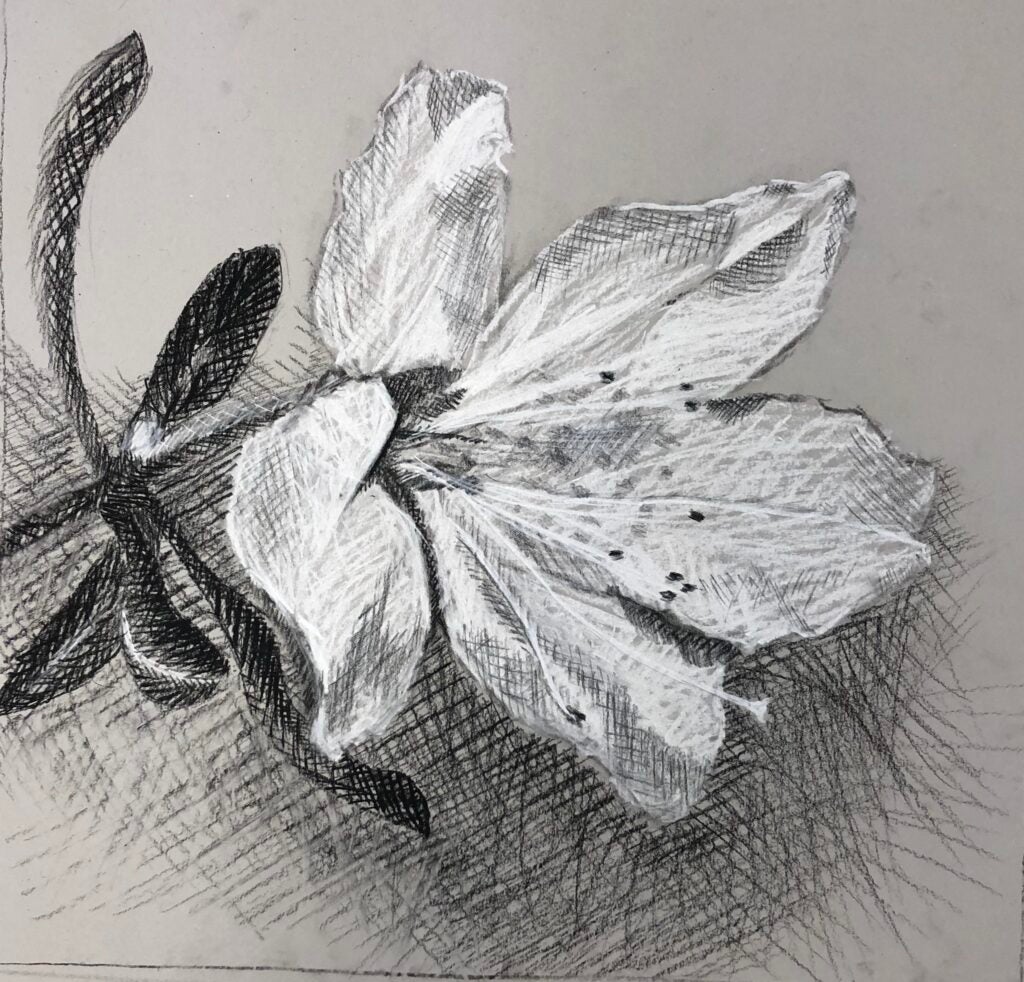
Kent Hall, Flower study
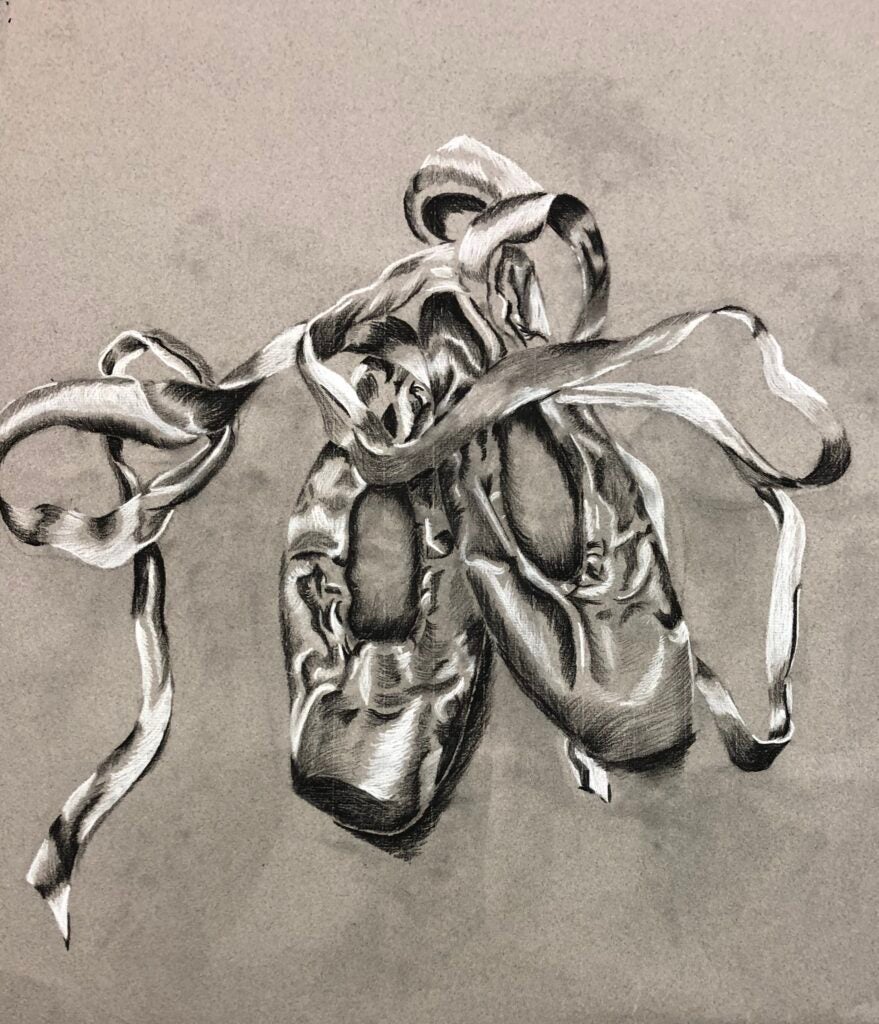
Jade Murphy, Ballet Slippers
ARTS 110-04 – Drawing I: Visual Language In this course, students explore drawing as a graphic means to process the world around them. The class starts with the fundamentals of composition, and how to use light and shadow to describe form. We then look at line as a means of discovery and expression, along with other techniques of rendering form, space and texture. Projects range from still life and interiors to studies of nature, animal skulls and the portrait/figure. Students are approached on an individual basis as well as through group discussions, slideshows, demonstrations and critiques. “Learning to draw is really a matter of learning to see.” – Kimon Nicolaides.
This course is taught by Professor Ann Schlesinger.
ARTS 215 – Drawing The Portrait

Egan Barnitt, Weekly Sketchbook in Ballpoint

Olivia Hansen,
Monochromatic Portrait in Conte

Nicole Thomas,
Zoomed in Self Portrait
ARTS 215 – Drawing The Portrait is an exploration of the portrait through a multitude of mediums and stylistic approaches, consisting of both traditional materials and techniques as well as contemporary and modern approaches to portraiture. The course will include fundamental skill-building exercises, but also encourage students to take risks, experiment and find their own voice. This will be achieved through observational study of the live model as well as from photo, the collage and imagination. Instruction will consist of both live and pre recorded demonstrations, slide presentations, individual and group critiques.
This course is taught by Professor Scott Hutchison.
Printmaking
ARTS 121 — Intro to Printmaking
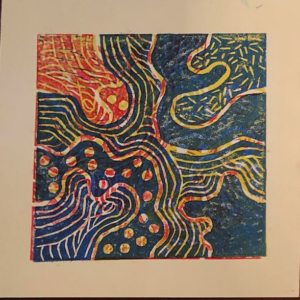
Grace Nguyen
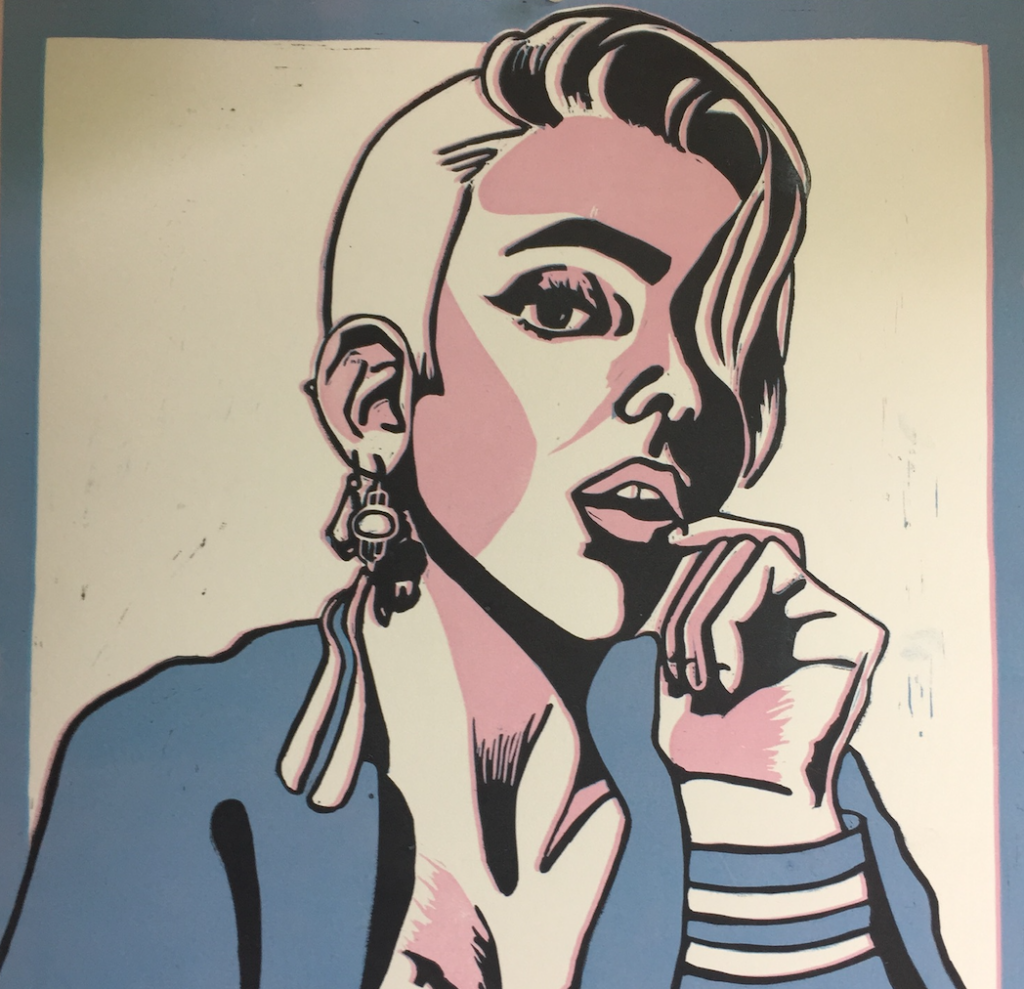
Tyler McConville

Grace Nguyen
ARTS 121 — Intro to Printmaking This course utilizes traditional hand printing of relief images from Linoleum plates. Test plates are done in color and B&W. Folds and simple bookmaking are presented as options. After learning safe cutting, registration and printing methods, students are encouraged to pursue their own personal imagery. Critiques and view and response of videos and online print related sites is required.
This course is taught by Professor Scip Barnhart.
ARTS 170 — Art of the Book

Olivia Tatarian
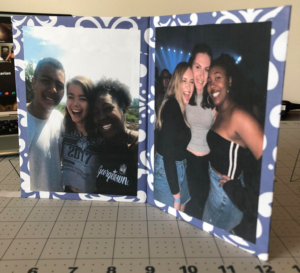
Jordyn Jones
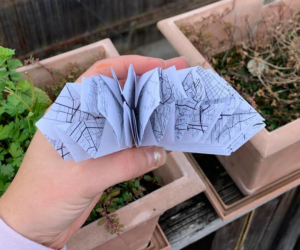
Olivia Tatarian
ARTS 170 — Art of the Book This course explores the practice and creation of unique artist books. Multiple bindings, sewing, folds, cutting methods, and techniques are taught to prepare students for personal expression through hand made books.
This course is taught by Professor Scip Barnhart.
Photography
Please note there will not be any darkroom courses offered in Spring 2021.
ARTS 132, Alternative Processes in Photo
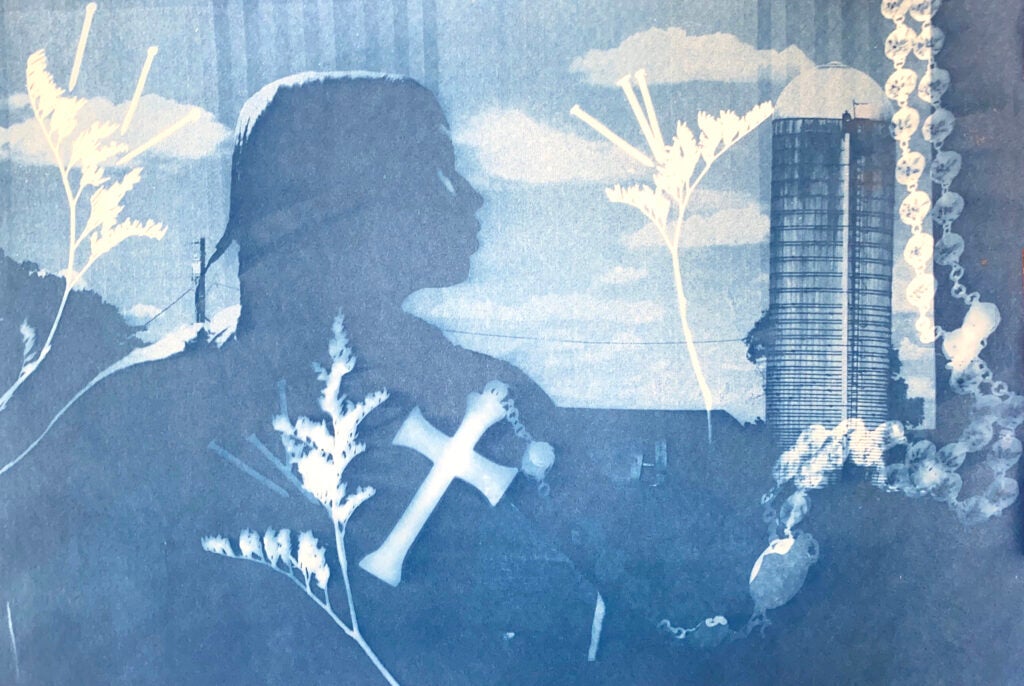
Cyanotype – Silhouette with Photograms using rosary, plant life and nails.

Gesso Transfer Print
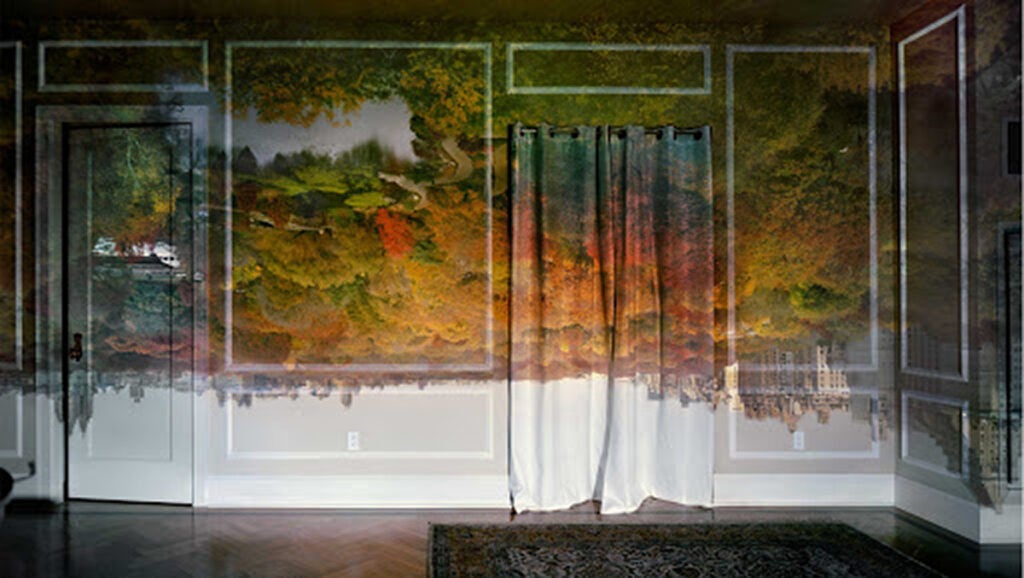
Camera Obscura
ARTS 132 — Alternative Processes in Photo Back in the day meets modern-day, contemporary alternative photographic processes. This class combines modern-day technology with historic non-traditional printing and photographic processes. DSLR cameras and photo editing software are applied to centuries-old photographic processes. Students will gain knowledge of both digital and hands-on non-traditional processes. Additionally, the class will include discussions as to history, invention, and contemporary artist regarding each process.
This course is taught by Professor Kelly Carr.
Digital
ARTS 131-01 – Photo 1: Digital

Abel Teffra, Fall 2020

Valerie Sanchez, Summer 2020

Leo Arnett, Summer 2020
ARTS 131-01 — Photo 1: Digital is a basic digital photography studio art course designed to develop the hands-on skills necessary to produce and identify the elements of a good photograph and to acquire a thorough working knowledge of digital equipment. Students will gain an understanding of the aesthetic and technical areas of photography as a fine art. Class lectures, discussions and digital assignments will deal with photographic composition, criticism and history. Fundamental knowledge of computer programs such as Photoshop will be introduced in the semester to develop photographic imagery.
This course is taught by Professor Kelly Carr.
ARTS 131-02 – Photo 1: Digital
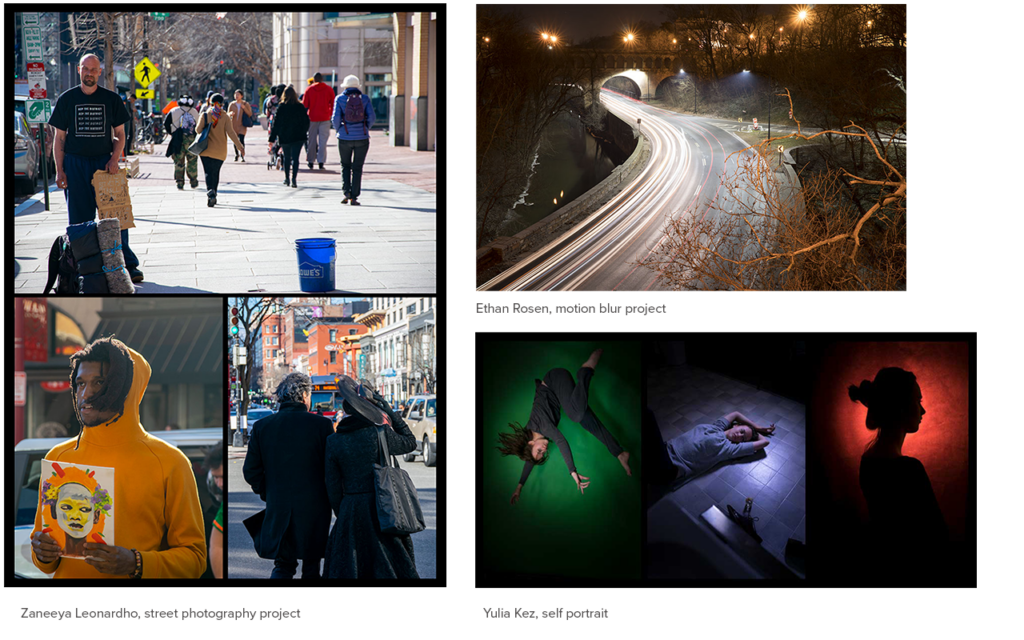
ARTS-131-02 — Photo 1: Digital is an introductory digital photography studio art course designed to develop the hands-on skills necessary to produce and identify the elements of a good photograph and to acquire a thorough working knowledge of digital equipment. Students will gain an understanding of the aesthetic and technical areas of photography as a fine art. Class lectures, discussions and digital lab assignments will deal with photographic composition, criticism and history, camera and paper types, and printer systems. Fundamental knowledge of computer programs such as Photoshop will be covered for students to edit and print their work. Students enrolled in studio courses must devote a minimum of FOUR TO SIX hours per week outside of class to develop and complete assignments. Through the analysis of the history of this medium this class involves the study of photography as a metaphor for the human condition with students engaging in self-reflection and questioning through analysis, inquiry, dialogue and creation. This course fulfills the Georgetown HALC (Humanities, Art, Literature and Culture requirement) requirement.
This course is taught by Professor Roberto Bocci.
ARTS 131-03 & 04 – Photo 1: Digital
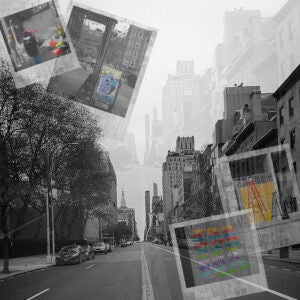
Andrea Cano, Final portfolio work

Carl Wegner, Final portfolio work

Final portfolio work.
ARTS 131-03 & 04 — Photo 1: Digital Photography plays a predominant role in how we explore and express ourselves, how we connect. Even after the pandemic, that will still be true. This class explores how the craft challenges, the cultural framework, and the photographer’s perspective are potential tools to help be better at making and understanding photographs. The sample images are student’s final portfolios from Fall 2020. I am humbled by how much progress the students made even as we explored without the possibility of brainstorming face-to-face around a table.
These courses are taught by Professor Bruce McKaig.
ARTS 230 – Photography Studio II
ARTS 230 – Photography Studio II is an advanced class for both film and digital photography students to continue shooting and printing their creative work in order to compile a portfolio that can be used to apply for internships, jobs or graduate school. Projects include the portrayal of a city (Washington DC and/or other), event documentation (the documentation of street events, political protests, rock concerts etc.), a book-making project that can be printed and bound in-house or sent out to companies like Blurb, and mini projects to learn how to use advanced Photoshop compositing and editing techniques. Projects can be developed on film or digital format and printed as gelatin silver and/or digital prints. As students produce work the prints are inserted into a hard copy portfolio or added to a website. The primary software packages you will use is Adobe Photoshop and Bridge and/or Adobe Lightroom.
This course is taught by Professor Roberto Bocci.
Sculpture
ARTS 140 – Sculpture I
There are two sections of ARTS 140, at different times.
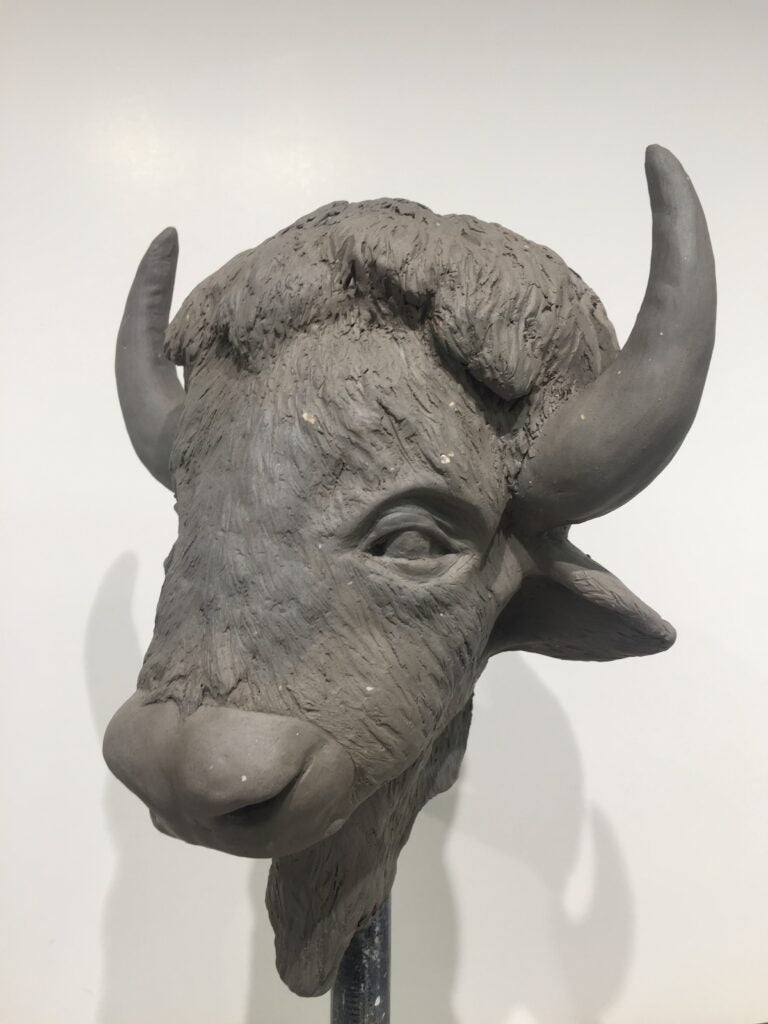
Sidney Lee, Modeling from life

Sean Letendre, Cardboard self-portrait

Corine Forward, Spring 2019, Micro Monument Assignment
ARTS 140 – Sculpture I offers students the opportunity to exercise their creative drive and objectify their ideas as three-dimensional form. Students work in traditional and contemporary methods and materials. During the semester there are three thematically driven projects that simultaneously introduce new materials, processes, and conceptual consideration. Assignments begin with demonstrations and example images of work by artists of different eras and previous students from Sculpture One. This spring semester Sculpture I will include projects that range from modeling a form in clay, creating sculptures with recycled cardboard and designing a miniature monument that will incorporate a range of materials. All sculptural processes will be low tech and accessible to all.
This course is taught by Professor Evan Reed.
Painting
ARTS 150-01 – Painting I: Oil
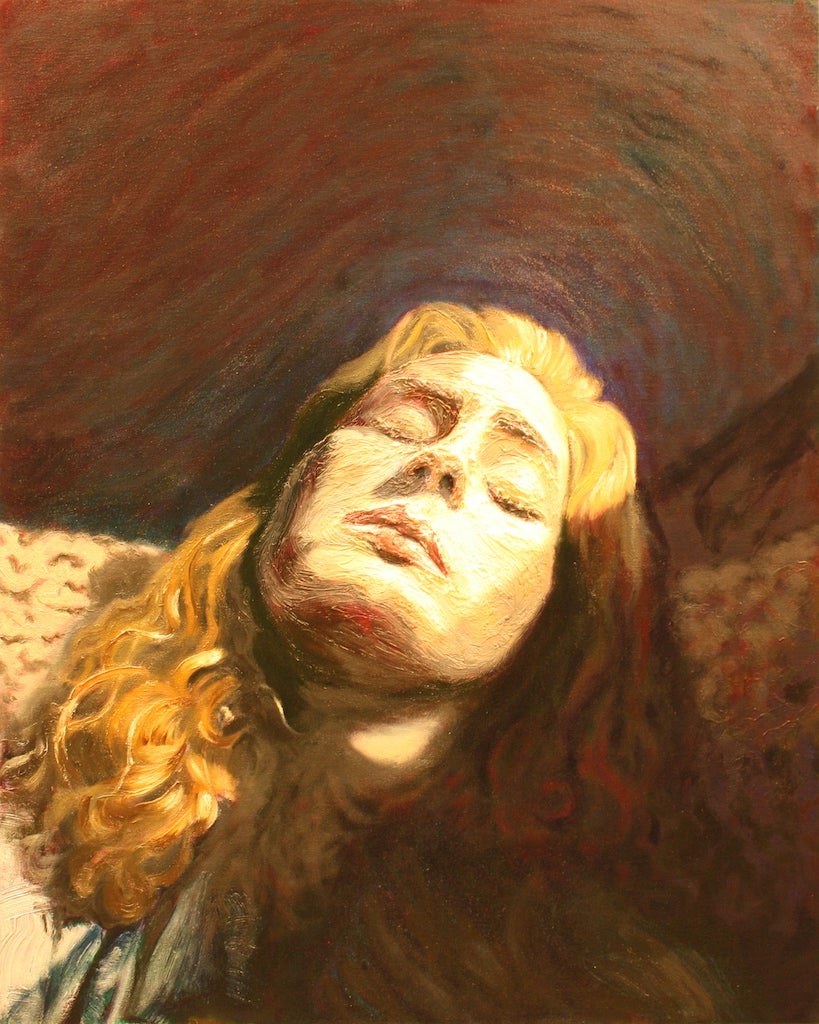
Kristina Ravensbergen, Portrait.
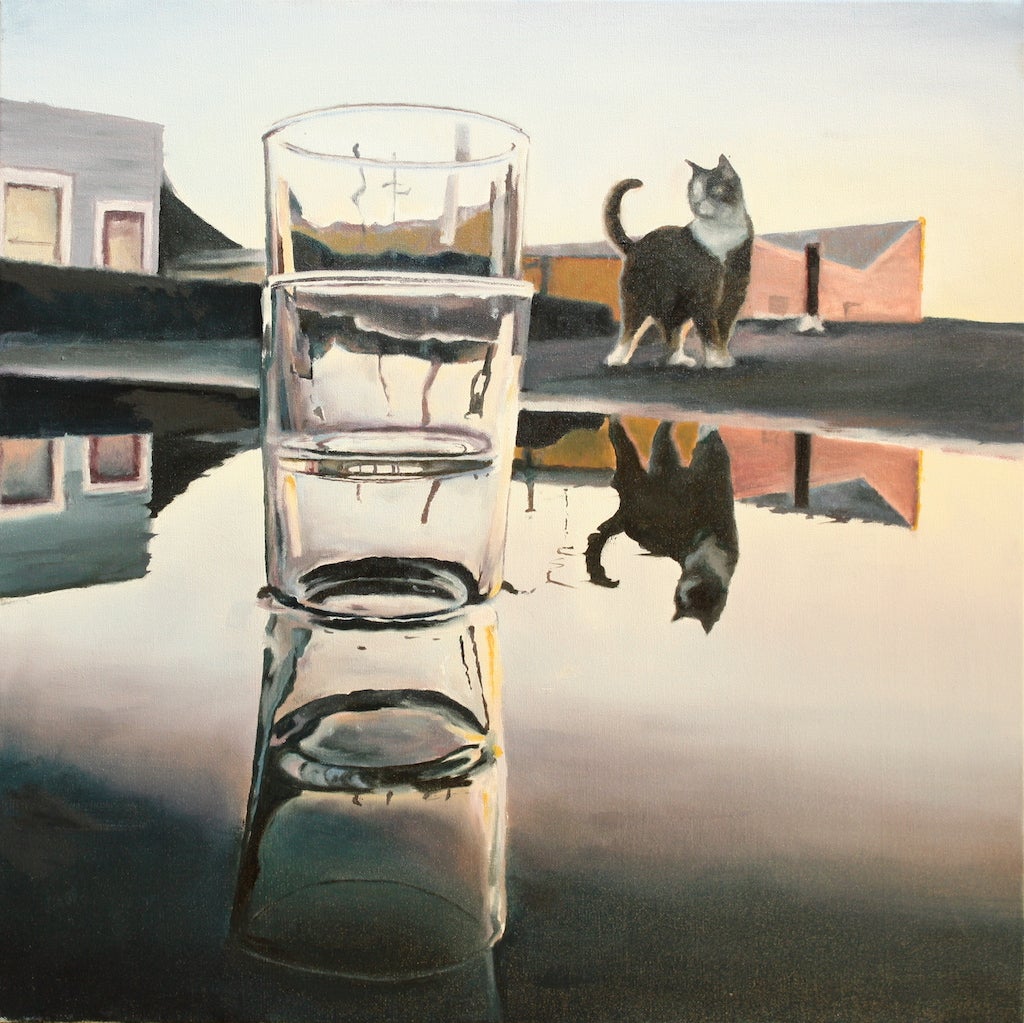
Lola Bushnell, Landscape painting.
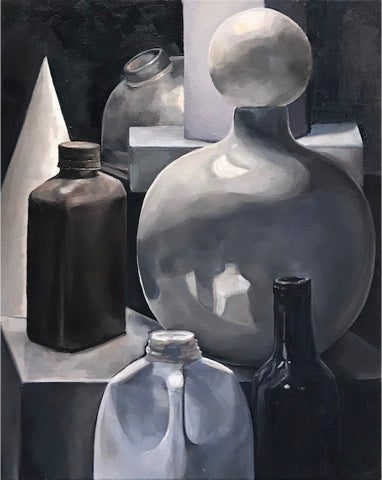
Sonya Fares, Limited palette painting.
ARTS 150-01 — Painting I: Oil Edward Hopper once said, “If I could say it in words there would be no reason to paint.” In this course, students will use paint as a means of creative expression and as a means to explore their individual interests. Students will gain inspiration for their work from their personal-history and surrounding environments. They will learn to see the world from a new perspective, and with fresh eyes. This course will begin with foundational material, building step by step in complexity. Students will explore color theory and composition. Understanding that students have different levels of painting experience, I work with each student individually to help them improve. Using interactive group critiques and one-on-one feedback from me, all students will gain valuable feedback on their drawings. A variety of painting processes and techniques will be covered. In addition to still life, students will be able to do landscape and figure paintings. As a remote course, resources will include prerecorded demonstrations, live-recorded demonstrations, slideshow lectures, and short films about artists.
This course is taught by Professor Mark Anderson.
ARTS 150-02 – Painting I: Oil
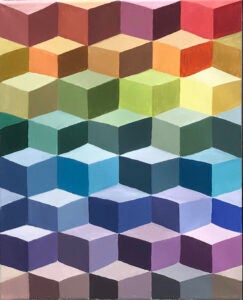
Julia Tolfa.
Oil on canvas.
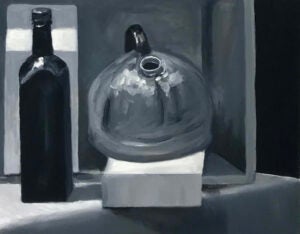
Ethan Clark
Oil on canvas.
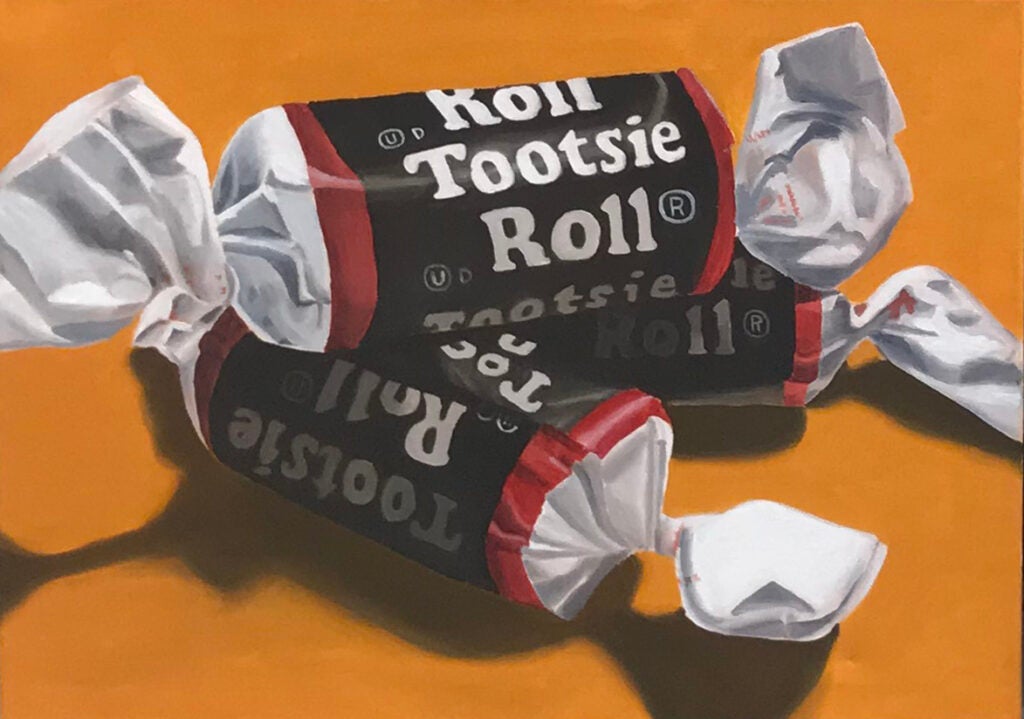
Julia Tolfa.
Oil on canvas.
ARTS 150 02 – Painting I: Oil, is a studio art class developing the techniques and concepts of painting in traditional, oil medium used from the Renaissance to today. Students will learn the basic techniques of transparent glazing and opaque oil painting. They will investigate the impact of color and value on the illusion of space and form. While focusing on the traditional subjects of landscape, still life, and figure, they will create a portfolio of three paintings developing their drawing and painting abilities with the medium. Studio demonstrations, lectures, slide presentations and individual and class critiques will be conducted online using Zoom and Canvas to present all aspects of instruction. Students create oil paintings during regular class sessions with feedback from the instructor. They continue to develop their paintings outside of class. The students receive individual guidance and evaluations from the instructor during each class as well as valuable insights from the student discussions during class critiques.
This course is taught by Professor John Morrell.
ARTS 150-03 – Painting I: Oil
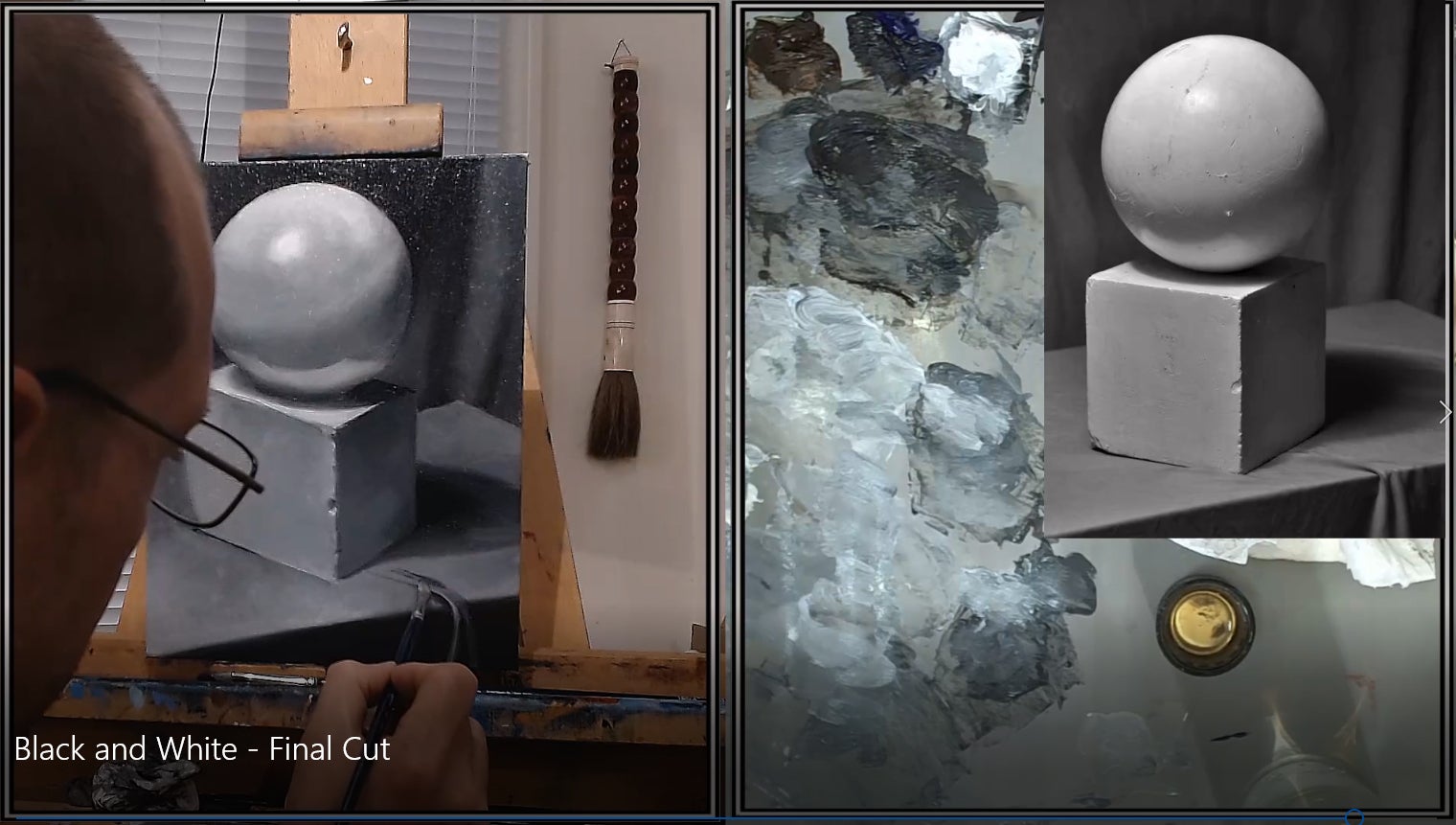
Zoom Black and White Demonstration

Melissa Gonzalez, Collage Painting Project

Susanna Hermann, Multiplicity Painting Project
ARTS 150 03 — Painting I: Oil is an introductory painting course that teaches the basic techniques of painting. Students learn to paint from observation, in a manner that results in a realistic depiction of the subject. However, the goal of this course is not to make copies, but to strike a balance between an art historical approach to painting with a contemporary one – fostering an environment that encourages students to think creatively and to experiment with the paint and the subject. This is achieved through live and prerecorded demonstrations, artist slide lectures, group, and individual critiques.
This course is taught by Professor Scott Hutchison.
ARTS 151 – Painting I: Acrylic
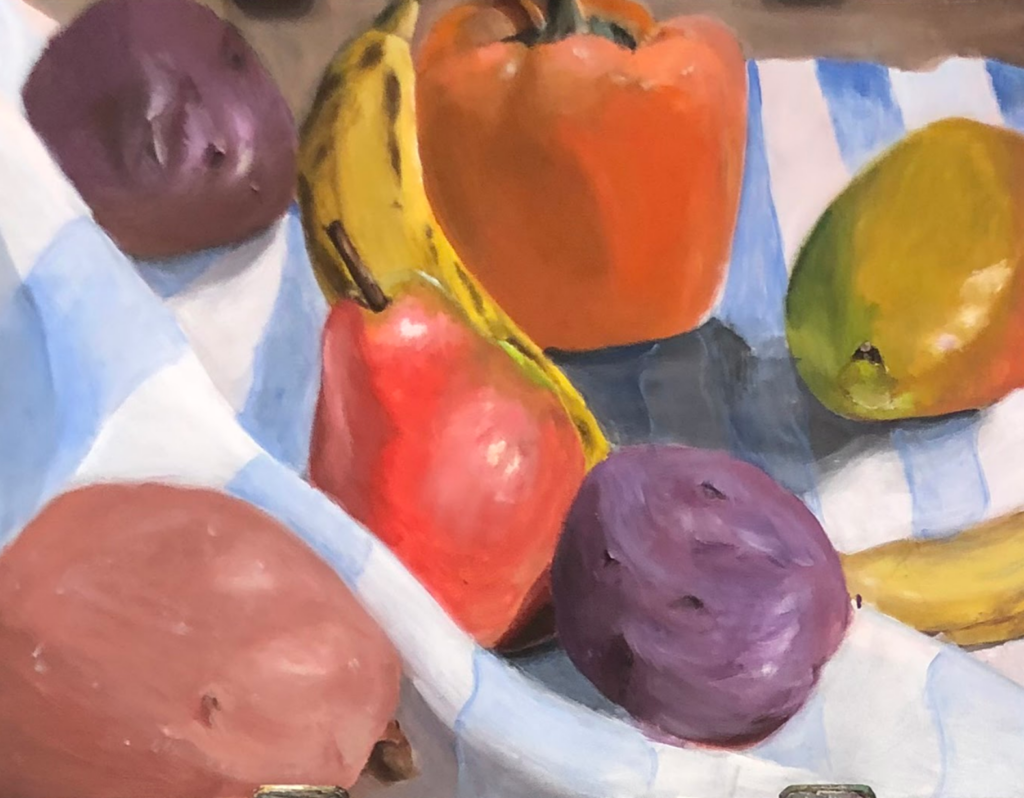
Project 3: Fruit with multiple colors
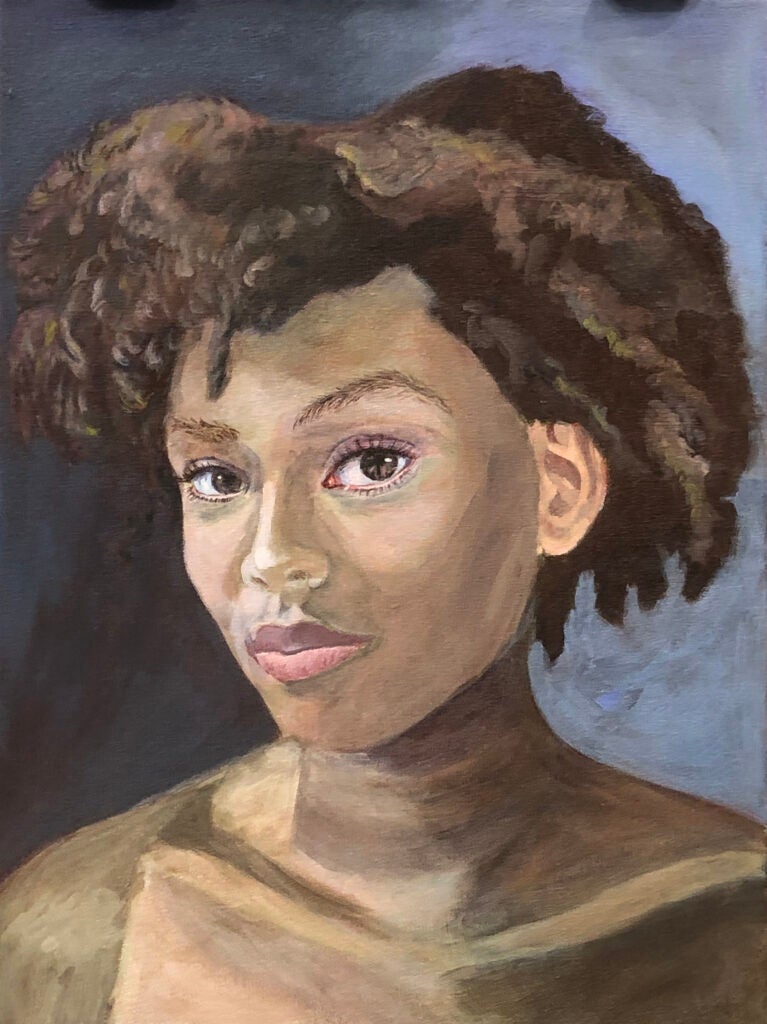
Allemai Dagnatgchew, Project 4: Self-portrait
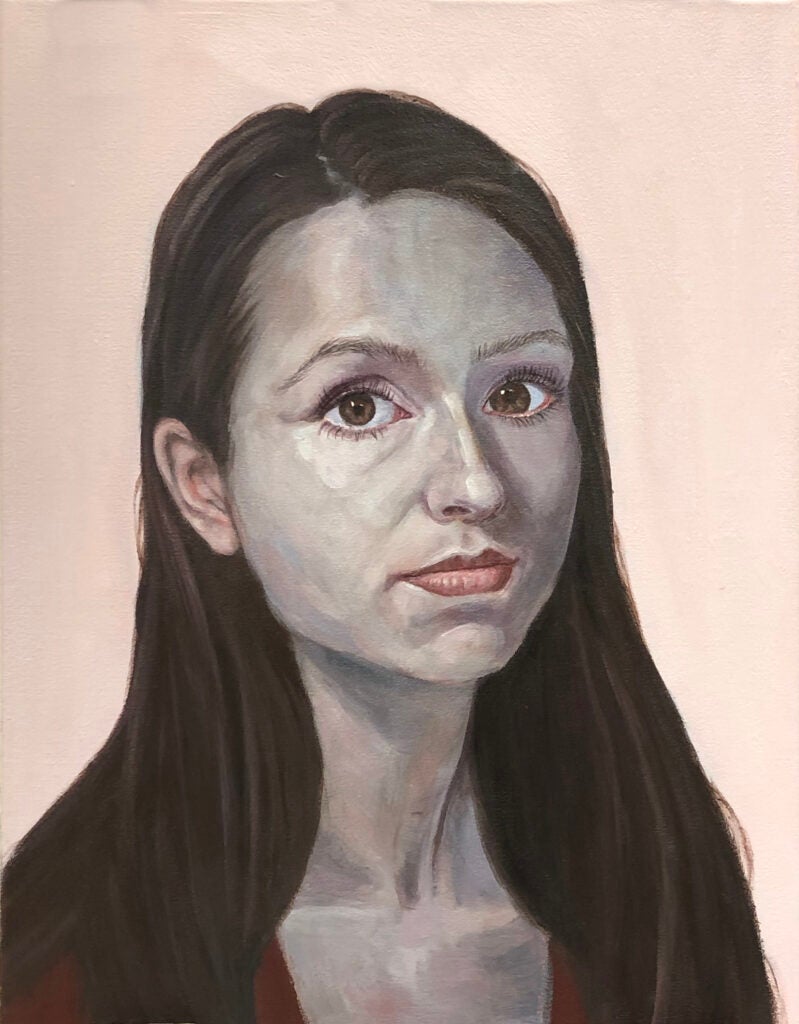
Kristen Hovland, Project 4: Self-portrait
ARTS 151 – Painting I: Acrylic As this class is taught fully online for the fall semester, it is structured to meet the demands of a remote teaching/learning class. Using Zoom and Google Slides presentations, which have been already embedded in Canvas, we will meet synchronously during our scheduled class times. Teaching will consist of in-class instruction, demonstrations, presentations, pre-recorded demonstration videos, and individual and group critiques. Most portions of classes will be recorded and will be available if a student is unable to attend due to challenging circumstances. During synchronous teaching, students will work on their art projects after a lecture or demonstration. Students will be asked to upload their in-progress images to the Google Slides in Canvas multiple times during a class. While reviewing images with students, I will offer very specific feedback so they can continue to develop their projects. During each class meeting, students will have opportunities to get help individually, and if needed, through Breakout Room sessions. In addition, students can use office hours when they need extra help.
This course is taught by Professor BG Muhn.
ARTS 154 01 – Intro to Watercolor
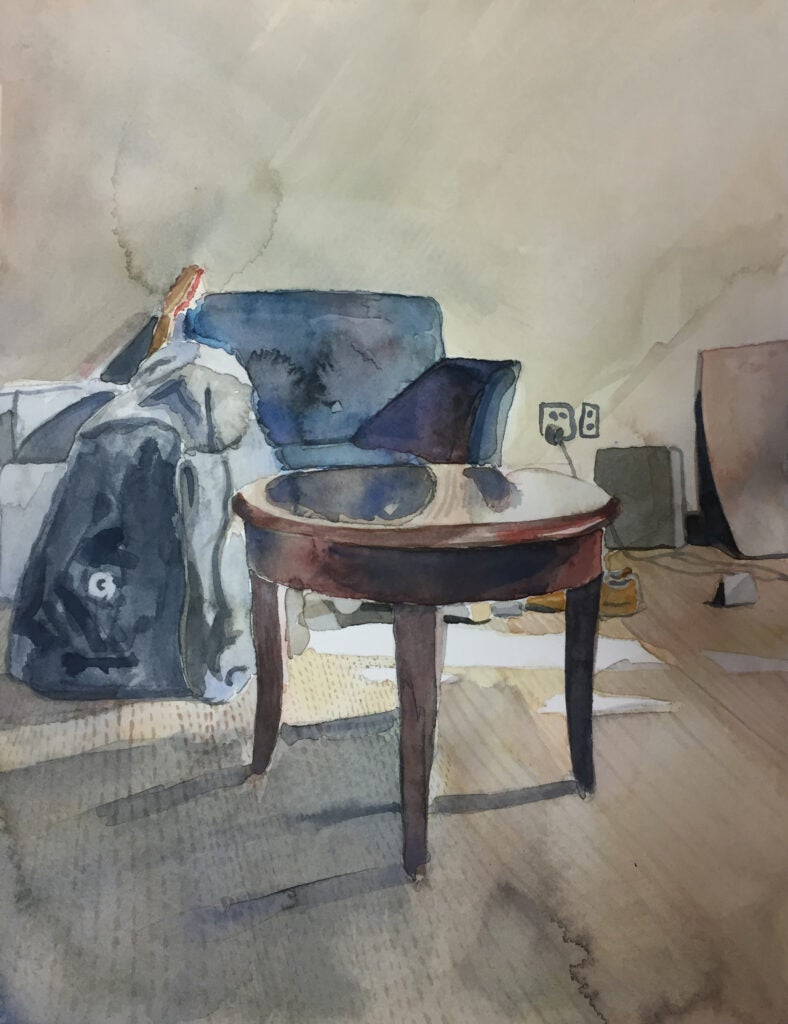
Edson Martinez.
Watercolor on paper.

Danielle Deiotte.
Watercolor on paper.

Jack Wathieu.
Watercolor on paper.
ARTS 154 01 — Intro to Watercolor, is a studio art class developing the techniques and concepts of painting in traditional, water-based medium. Students will learn the basic techniques of transparent and opaque watercolor. They will investigate the impact of color and value on the illusion of space and form. While focusing on the traditional subjects of landscape, still life, and figure, they will create a portfolio of five images developing their drawing and painting abilities with the medium. Studio projects (watercolors), demonstrations, lectures, and; individual and class critiques will be conducted online using Zoom and Canvas to present all aspects of instruction — technique demonstrations, slide presentations and class discussion. Students create watercolors during regular class sessions for one-on-one feedback from the instructor and they continue to develop their paintings outside of class. The students receive individual guidance and evaluations from the instructor during each class as well as valuable insights from the student discussions during class critiques.
This course is taught by Professor John Morrell.
ARTS 250 — Painting Studio II
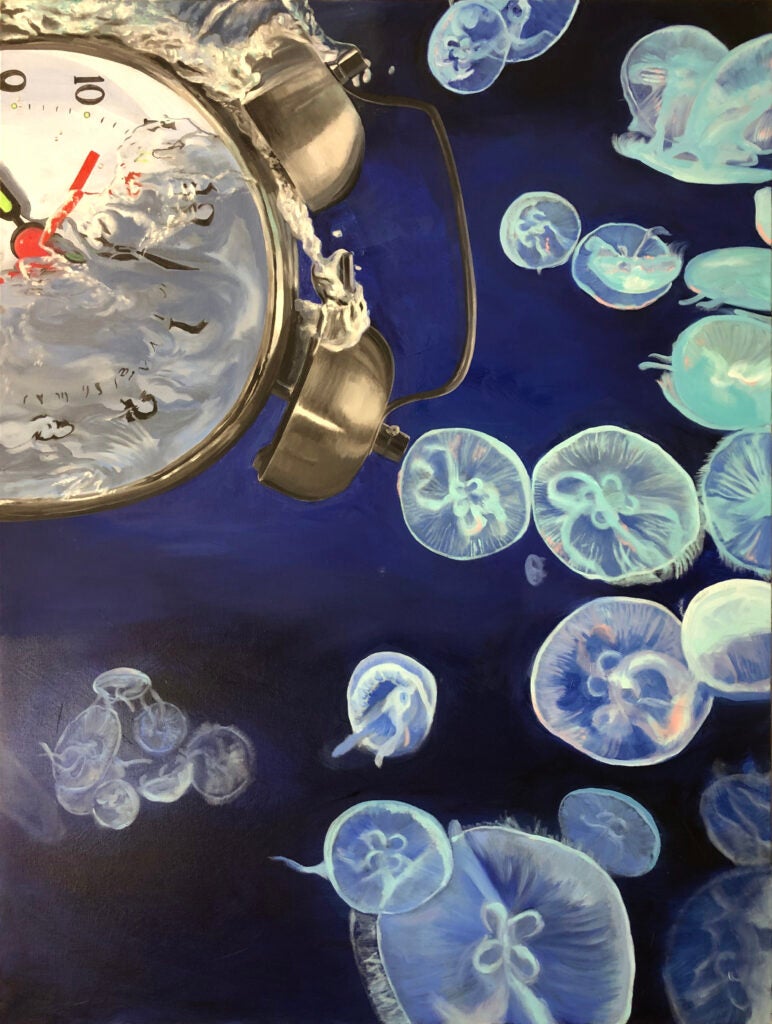
Jude An, Project 1: Conceptual Container
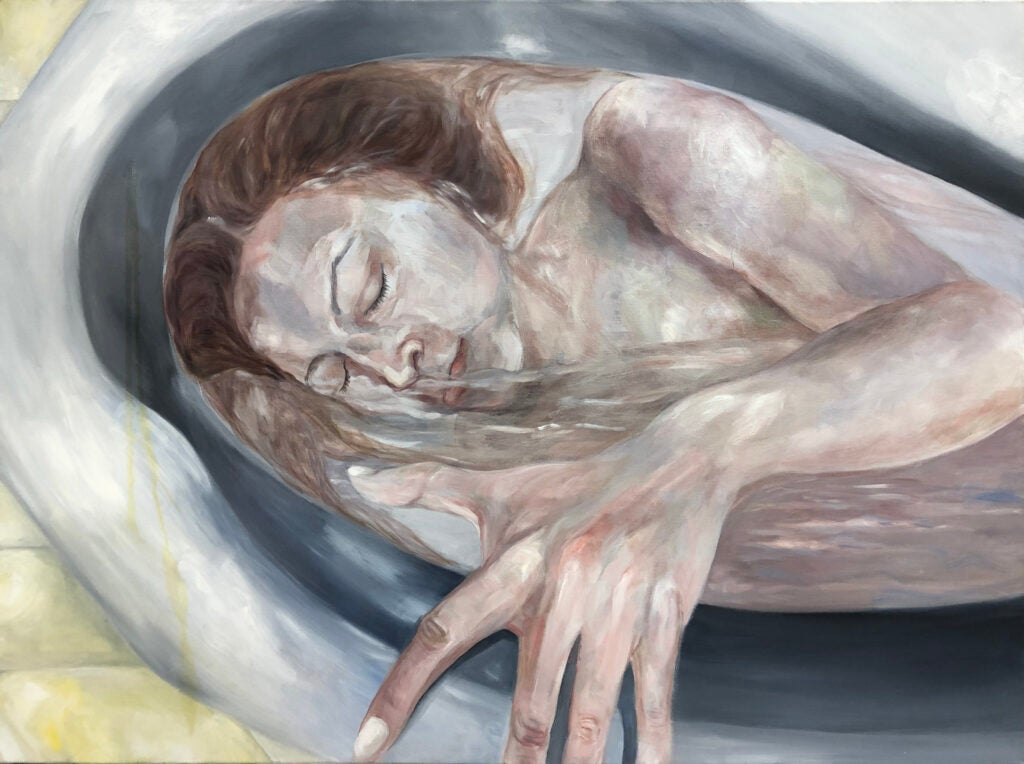
Christina Shoucair, Project 1: Conceptual Container
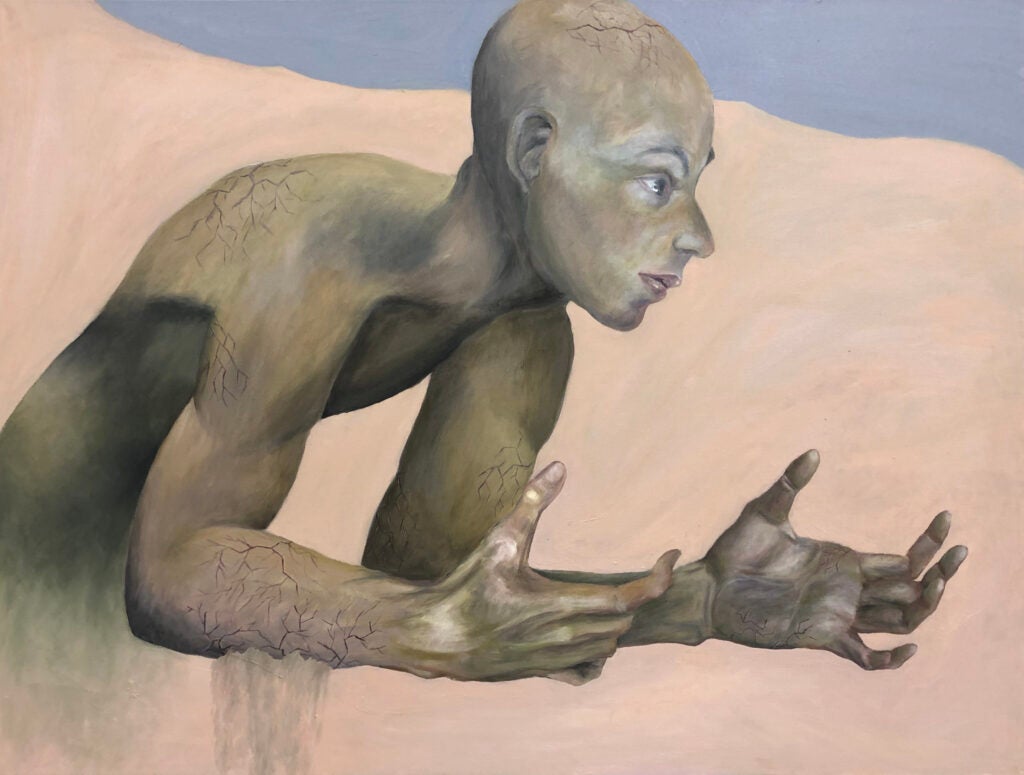
Sharon Huynh, Project 2: Human Body
ARTS 250 — Painting Studio II This is an intermediate level painting course. The overall theme of the assignments for the semester is moving away from straight observational painting and exploring imagination and visual dynamism within a juxtaposition of the real and the unreal, blurring the boundaries between dream and reality and consciousness and the subconscious. This will be the overarching idea for all three projects while each project deals with a specific subject matter. Relevant references and resources will be introduced for students to contextualize their work using art history. Assignments begun in class will require time outside of class to develop and complete. Medium: either oil or acrylic.
This course is taught by Professor BG Muhn.
Graphic Design
ARTS 162 01 – Intro to Graphic Design

Dakota Access Pipeline protests, also called by the hashtag #NoDAPL .
Students had studies the bauhaus design and did research on the DAPL and created poster designs.

After learning the tools in illustrator and talking about branding and typography students design a logo, do variations and design business cards for the business and learn about the printing process. Work by Michelle Motta.

Students learn to do a portfolio newsletter in InDesign for their projects. This a spread from Nia Jordan’s portfolio.
Arts 162-01 — Introduction to Graphic Design: Students will learn the formal, aesthetic, and communicative aspects of creating effective graphic images. Projects include logos, typography, and digital arts that promote mastery of techniques, methods, and materials. In order to foster creativity, we start with breathing meditation at the start of class, followed by discussions about design and learn the Adobe software and the foundation of design principles. The goal of this class is to strengthen students’ visual literacy and communication skills as part of their liberal arts education.
This course is taught by Professor Negar Nahidian.
ARTS 162 02 – Intro to Graphic Design

Student multilingual print and interactive magazines based on chosen topic, major or minor
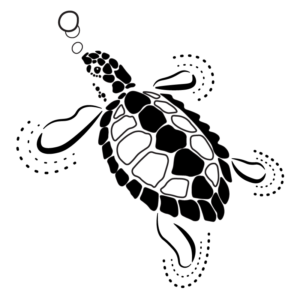
Chiara Lewis, translation drawings, pre-logo

Angela Perez, logo design and branding, laser etched and cut Maker Hub promo item
ARTS 162 02 — Intro to Graphic Design is a studio art class focused on the creation of graphic design assets for print and screen-based media. During this course, you will learn basic Adobe Illustrator, Adobe Photoshop, and Adobe InDesign software through real-world projects and current topics in graphic design. The course seeks to familiarize design students with the communicative power of visual form and to help students develop a personal process of creating original graphic forms capable of effectively communicating a message or information. Projects integrate the following topics: principles of graphic design, design research, logos and branding, album cover design, interactive and print publication design, typography, graphic design history, and professional portfolios.
This course is taught by Professor Toni-Lee Sangastiano
ARTS 262 — Advanced Graphic Design
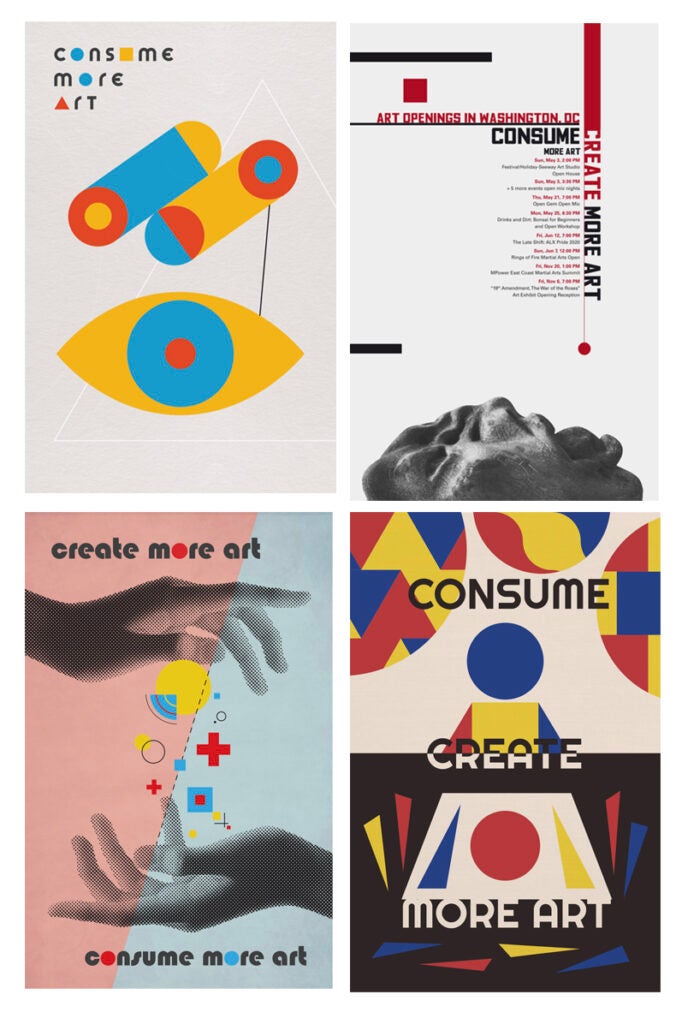
Bauhaus Poster: Consume More Art, Create More Art
After studying the Bauhaus, students were asked to do a poster project based on the Bauhaus principals Design, typography and use of color. Top left: Shana Bottom left: Kate Gregory Bottom right: AndresSiles-Loayza Top right: Edson Martinez
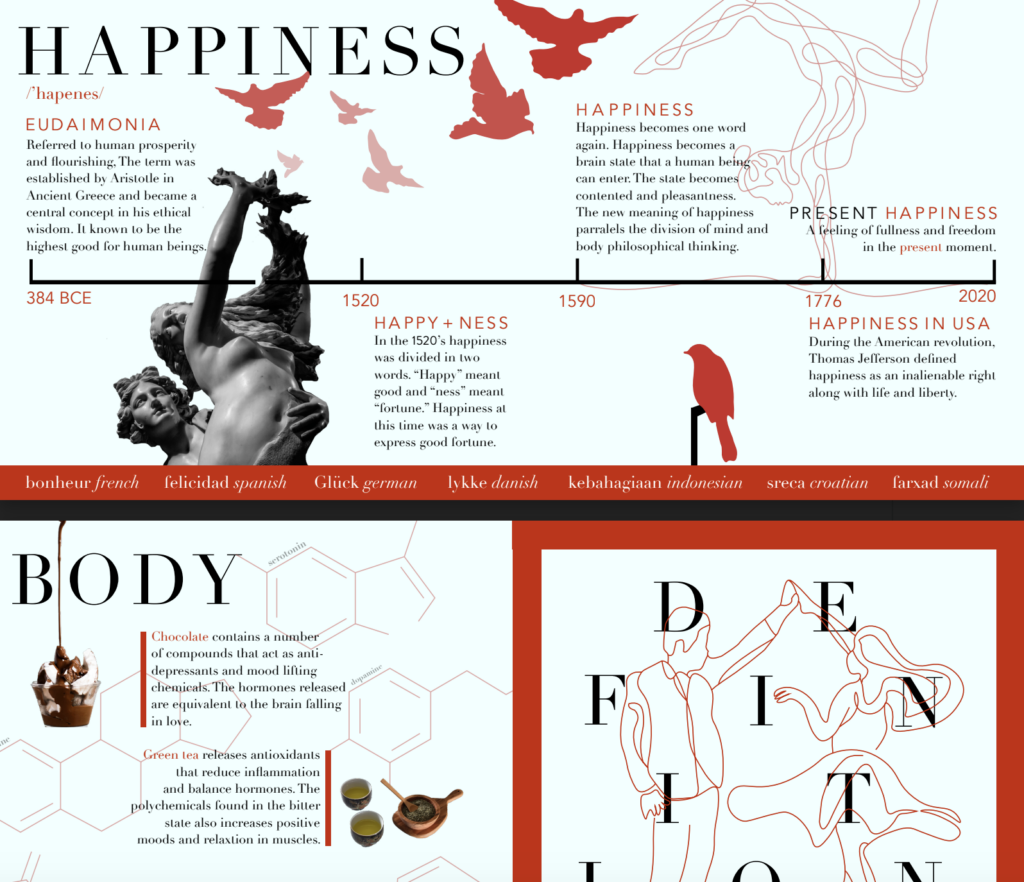
Happiness book:
Students were asked to do the layout and design of a book and send it to print.
They were asked to use Adobe illustrator and photoshop for the images and Adobe Indesign for the layout and typography. Work by Juliette Silvain.

Quarantine Cusine book:
Each student was asked to share their one favorite recipe and to design and do the typography and layout of a spreading he book. Work by Anne-Isabelle de Bokay.
ARTS 262 — Advanced Graphic Design Students will learn the mindful, formal, aesthetic and communicative aspects of creating effective graphic images. Typography, the history of type, type classifications and more will be taught and discussed. Students will design a book in Indesign and send to print, along with a type classification project cards, and other projects.
This course is taught by Professor Negar Nahidian.
Animation
ARTS 166 — Animation I
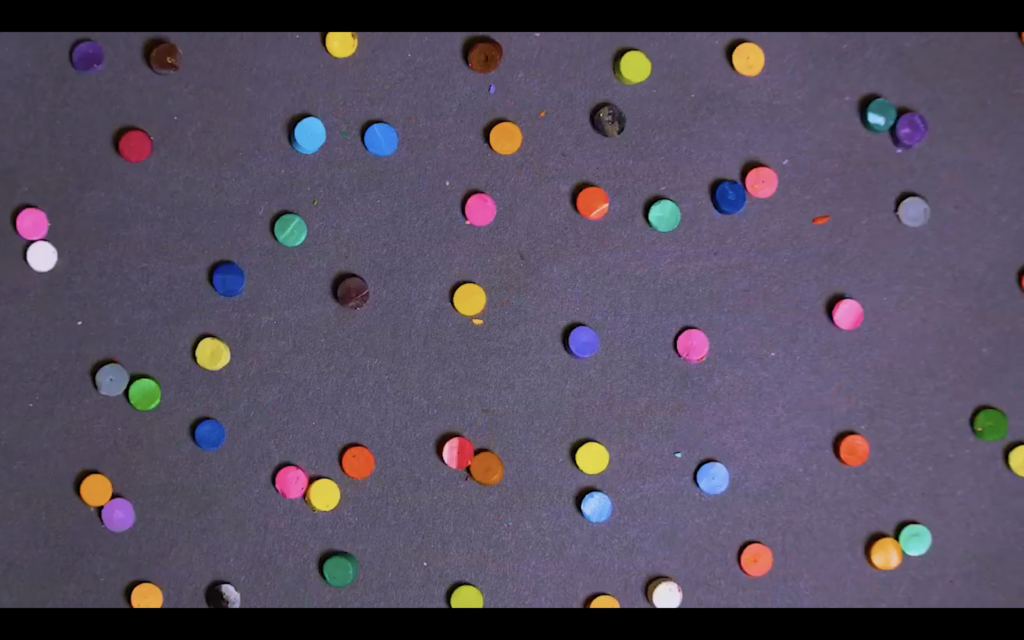
Screengrab from film by student Sarema Shorr
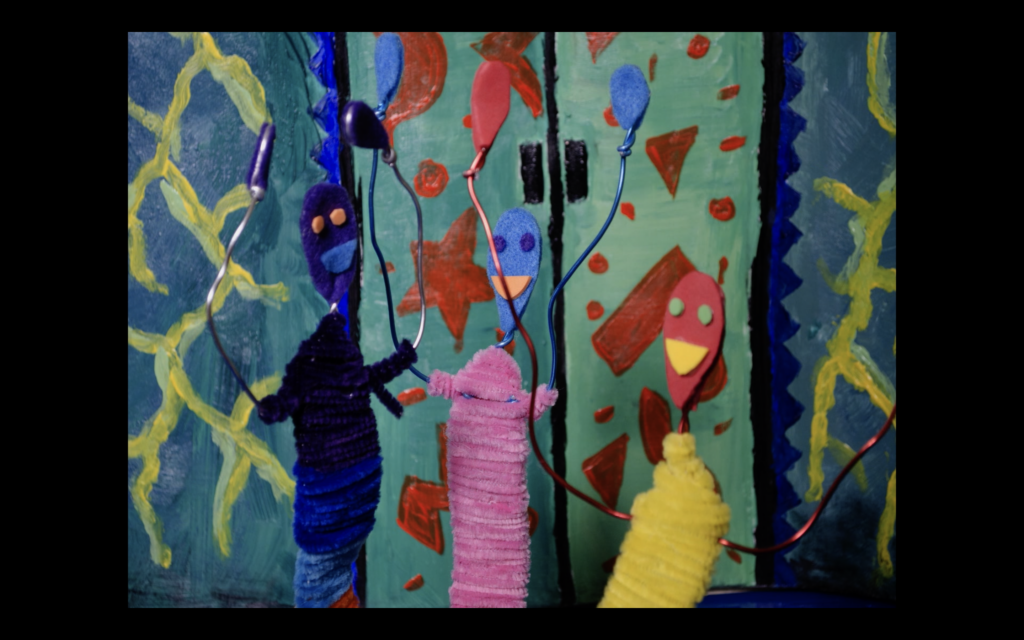
Screengrab from film by student Renata Garcia

Screengrab from film by student Shana Shin
ARTS 166 — Animation I is designed to introduce students to basic methods and practices in animation, while exposing them to artists working independently in the field. The course will provide an overview of techniques ranging from hand-drawn frame-by-frame animation, to object animation and pixilation. Each class will consist of a short demonstration, viewing of related works, hands-on experimentation and critique. Weekly assignments will further students’ exploration of animation approaches and techniques. The course will conclude with the creation of final projects in which students will develop and create an animated short in a medium of their choosing.
This course is taught by Professor Elyse Kelly.
ARTH 268 – Principles of Animation
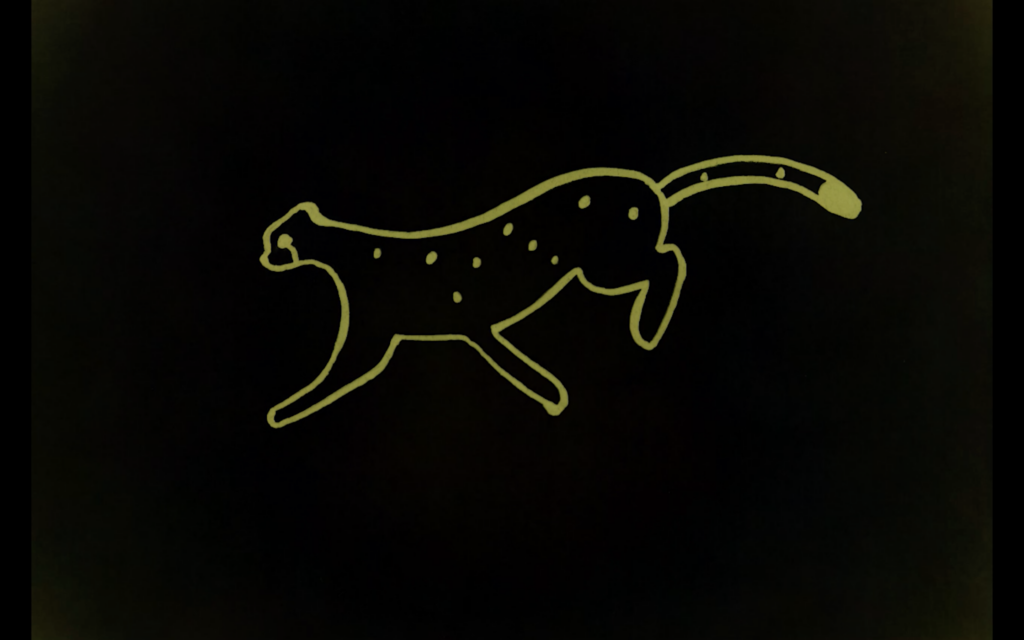
Screengrab from film by student Ella Petreski
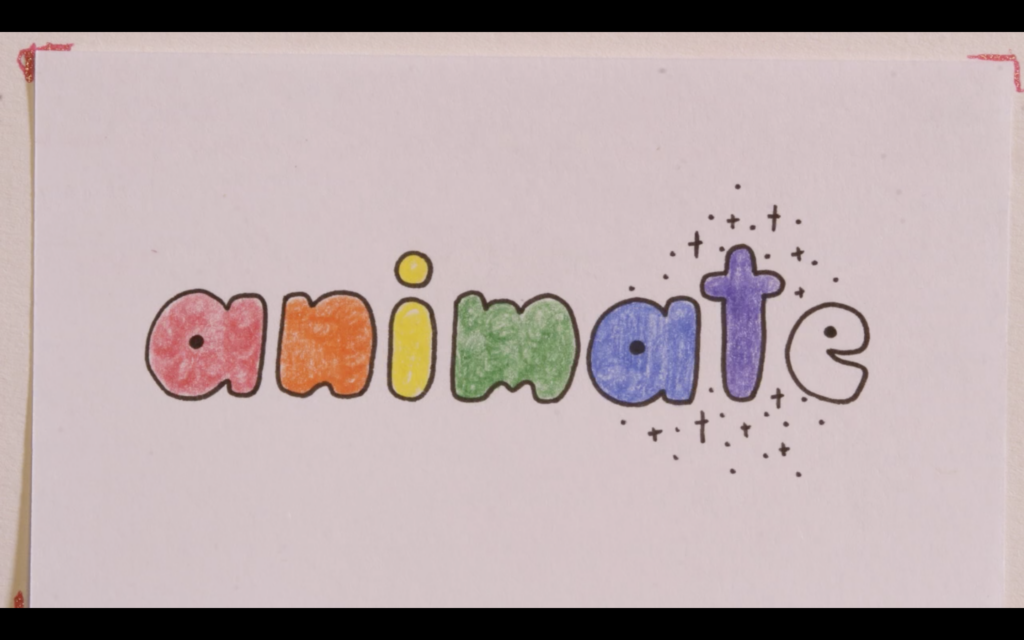
Screengrab from film by student Morgan Irish
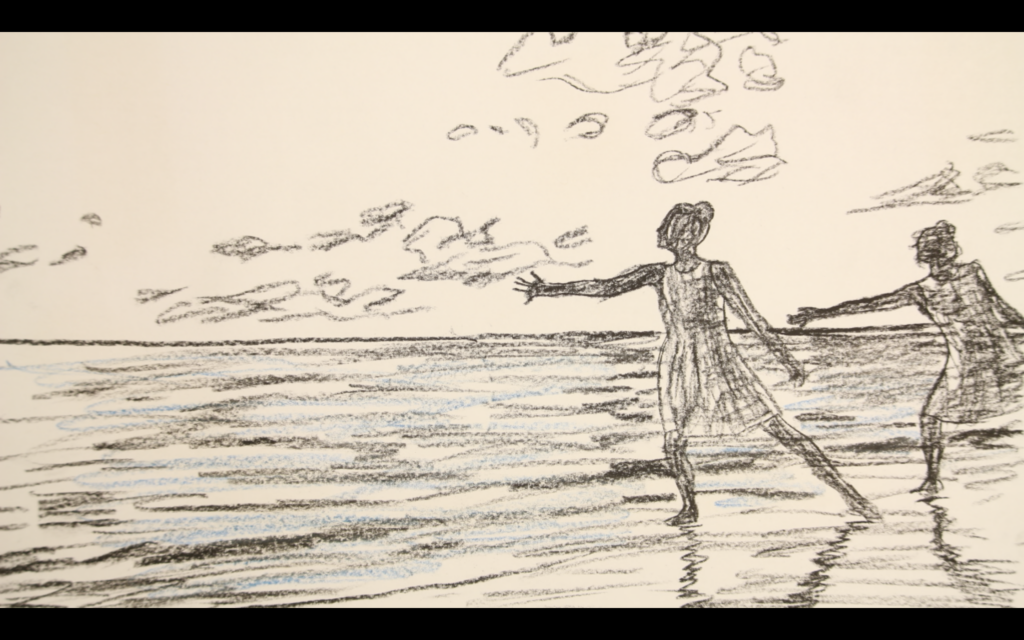
Screengrab from film by student Reagan Graney
ARTH 268 – Principles of Animation has been developed to sit alongside ARTS 166 and 266 for students interested in a deeper dive into the practical techniques used in traditional animation. During this class, you will be reacquainted with the ‘principles of animation’, and learn how to create strong believable animations while developing a sense of observation, timing and motion. The course will primarily focus on 2D mediums, however the techniques covered are an important foundation in all forms of animation. Classes will consist of short demonstrations, viewing of related works, hands-on experimentation and critique. The course will conclude with the creation of a final project in which students will illustrate the principles discussed in the course.
This course is taught by Professor Elyse Kelly.
Upper-Level ARTS Courses
ARTS courses at the 300-400 level are designed primarily for Art Majors, Minors and advanced students who want to work with a professor on one or several independent projects over the course of the semester. These courses require approval. Please inquire with the individual instructor for more information.
These courses include:
ARTS 221 — Directed Study in Printmaking
ARTS 312 — Drawing III: Directed Studies
ARTS 321 — Printmaking: Directed Study
ARTS 330 — Photography Studio III
ARTS 351 — Painting III: Directed Study
ARTS 355 — Advanced Painting Studio
ARTS 358 — Advanced Painting Studio II
ARTS 431 — Photography IV-Directed Study
ARTS 435 — Adv. Photography Studio
ARTS 455 — Adv. Painting Studio
ARTS 470 — Art Internship
Art History Courses
Ancient to Medieval Art
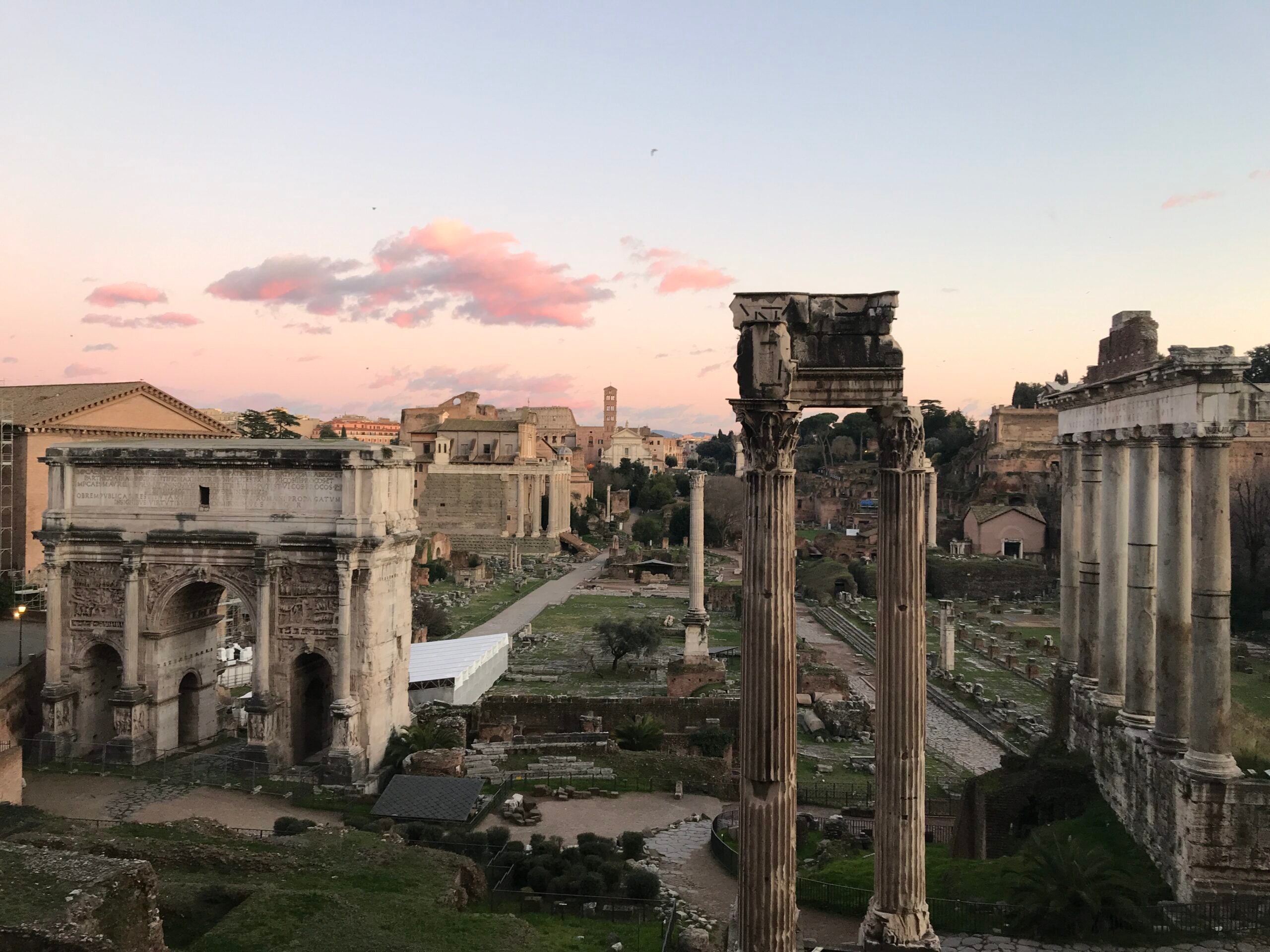
View of the Roman Forum – taken in December 2019 by Prof. Tilney
ARTH101 — Ancient to Medieval Art surveys the art and architecture from the Paleolithic period through the Gothic period. Within a roughly chronological structure, we will explore the art of these periods in relation to their broader cultural, intellectual and historical contexts. In addition to emphasizing the developments that define each historical period, we will consider the aesthetic advances made with the painting materials and methods available at the time.
This course is taught by Professor Barrett Tilney.
Renaissance to Modern Art
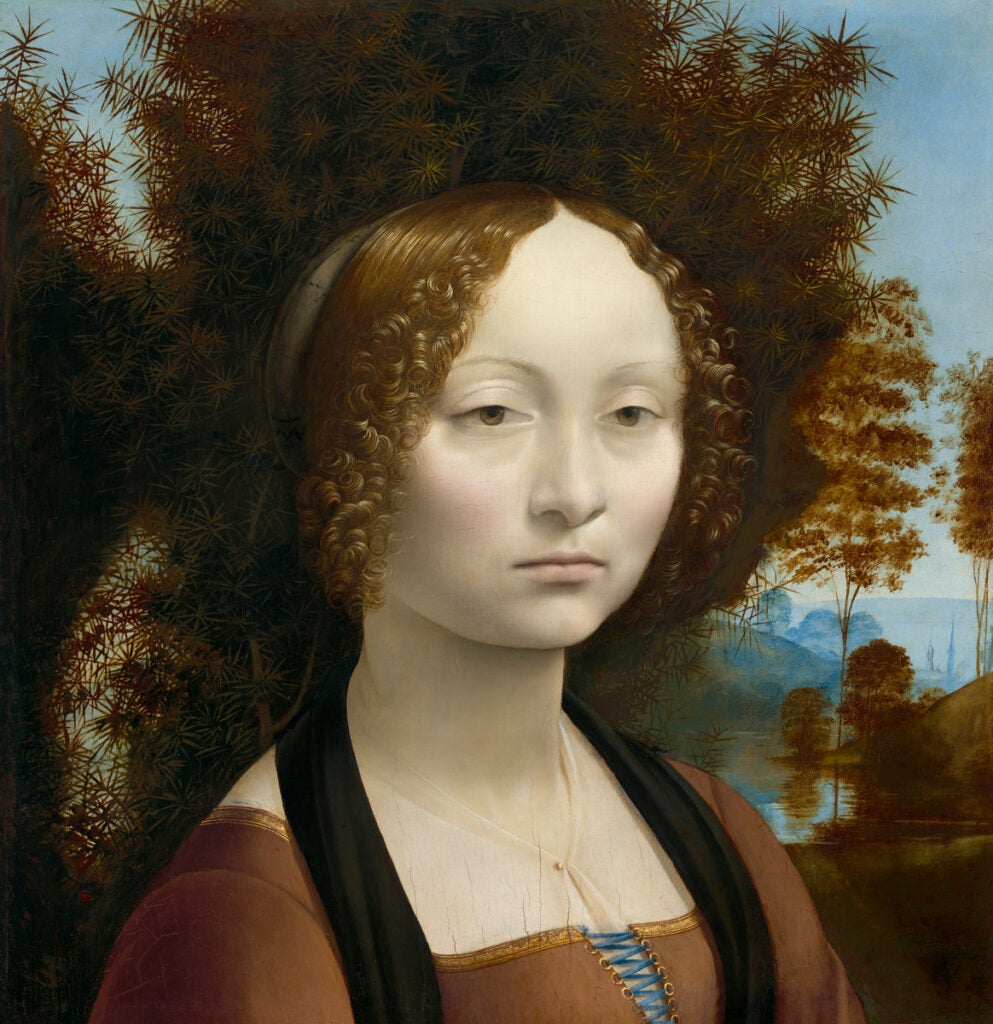
Leonardo da Vinci, Ginevra de’Benci,1474/78

Edouard Manet, Lunch on the Grass, 1863
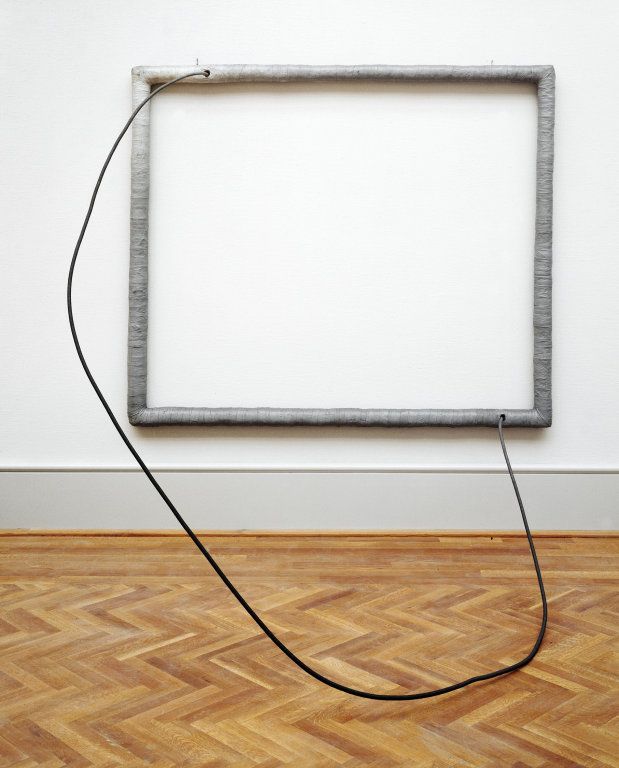
Eva Hesse, Hang Up, 1966
ARTH 102 — Renaissance to Modern Art surveys over six centuries of art to serve as an introduction to the history of Western culture, aesthetics, and civilization. During the semester, we will consider the work of major artists and artistic movements in the history of art from the beginning of the Italian Renaissance through the Modern era. The emphasis is on painting, sculpture, and architecture. The interaction of art and society will be explored through the chronological presentation of historical periods, permitting us to study the transformation of style and taste in relation to the changing culture and history of a particular time. The aim of the course is to provide a coherent framework for understanding the history of art in Europe and North America after 1300.
This course is taught by Professor Susan Nalezyty.
Baroque Art

Left image: Church of Sant’ Ignazio, Rome, Rome, Ceiling fresco detail of Glorification of St. Ignatius, c. 1685 by Fra Andrea Pozzo. Photo December 2019. Right image: Johannes Verspronck, Boy Sleeping in a Highchair, 1654, (taken in Art and Laughter Exhibition, Frans Hals Museum, Haarlem).
ARTH130 — Baroque Art introduces students to painting, prints, sculpture and architecture produced in the seventeenth century – the age of the Baroque. In this century of remarkably varied artistic production, regional distinctions arise in the context of explosive scientific discoveries, significant political changes, transformed religious beliefs, and wide reaching trade and exploration. We will examine selected works of art produced by artists such as Caravaggio, Velazquez, Poussin, Rubens, Rembrandt and Vermeer in Italy, Spain, France, Flanders and the Dutch Republic in the framework of the cultural, political, religious, and intellectual changes that make the art of this period so distinctive.
This course is taught by Professor Barrett Tilney.
Northern Renaissance Art
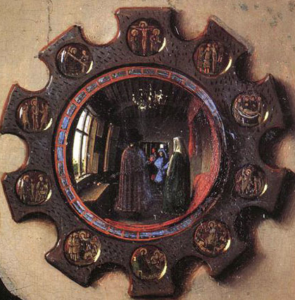
Jan van Eyck, Arnolfini Double Portrait (detail), 1434, London, National Gallery
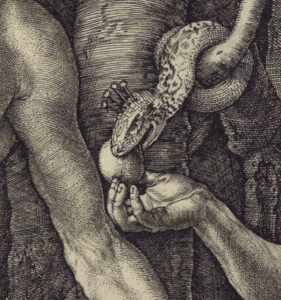
Albrecht Dürer, Adam and Eve (detail), 1504, Washington DC, National Gallery of Art
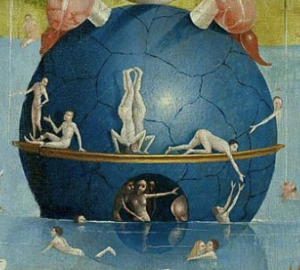
Hieronymus Bosch, Garden of Earthly Delights (detail), c. 1510, Madrid, Museo del Prado
ARTH 228 – Northern Renaissance Art explores art made in the Netherlands, Germany, and France c. 1300-1575, which includes an amazing variety of work produced for courts, churches, civic bodies, and private individuals among growing middle classes in the cities. Who paid for art? How was it produced? What roles did it play in society, politics, religion, and daily life? Why did so many new kinds of subject matter emerge in European art of this period? With emphasis on the highly original and influential work of such leading figures as Jan van Eyck, Albrecht Dürer, Hieronymus Bosch, and Pieter Bruegel, we will consider functions, meanings, and markets of art in a period of dramatic change.
This course is taught by Professor Alfred Acres.
German Art: Romantic to Weimar
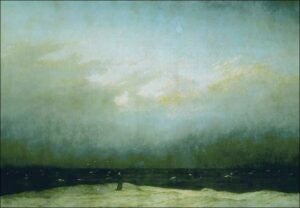
Caspar David Friedrich, Monk by the Sea, 1808-10 (Berlin)
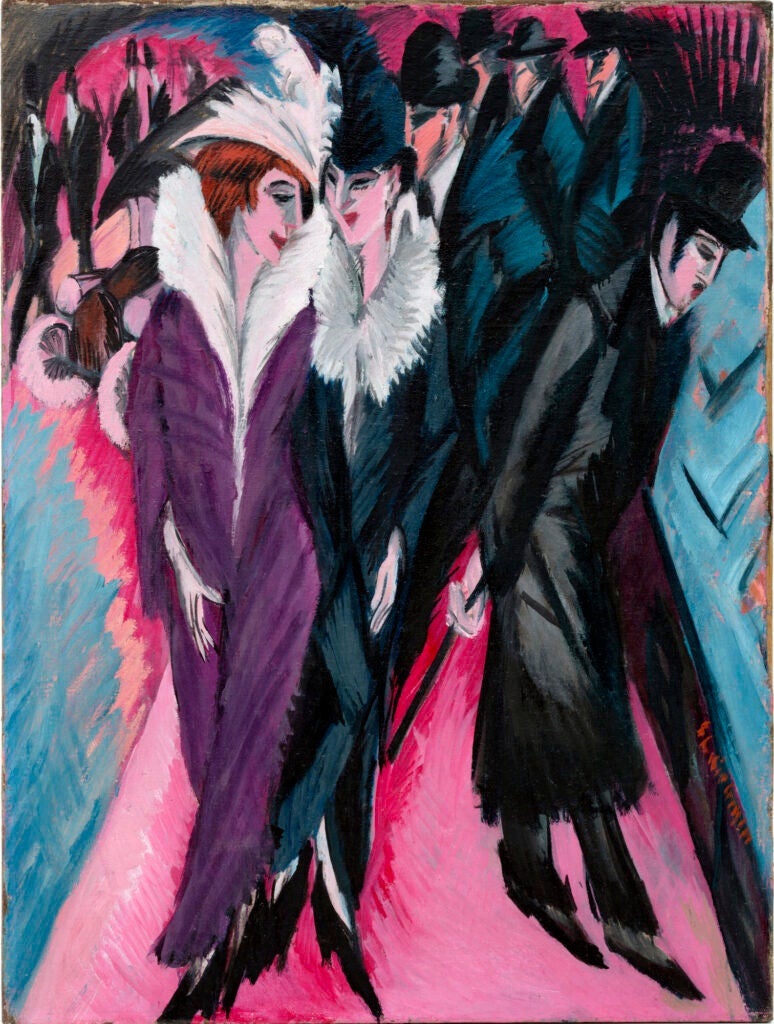
Ernst Ludwig Kirchner, Street, Berlin, 1913 (MoMA)
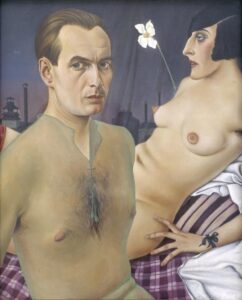
Christian Schad, Self-Portrait, 1927 (Tate)
ARTH 248 German Art: Romantic to Weimar This mid-level survey course explores the history of art in Germany-speaking countries from the late 18th-century to 1937. We begin with the Neo-Classic philosophy of Winckelmann and proceed to the Romanticism of Caspar David Friedrich and onward to the naturalist Adolph von Menzel, the Expressionist Brücke and Blaue Reiter groups, the Bauhaus collective, the Dadaists, Nazi architecture, and more. We will look at the birth of German film and modern theatre and will read Georg Kaiser’s Expressionist play Gas I. The class ends with an examination of the infamous “Degenerate Art” exhibition, organized in 1937 by the Nazis as an attack on modern art. In addition to serving as a corrective to Franco-centric art history, this class suggests important approaches to thinking about various social and political issues that continue to resonate with us today. (No knowledge of German required.)
This course is taught by Professor Elizabeth Prelinger.
History of Architecture
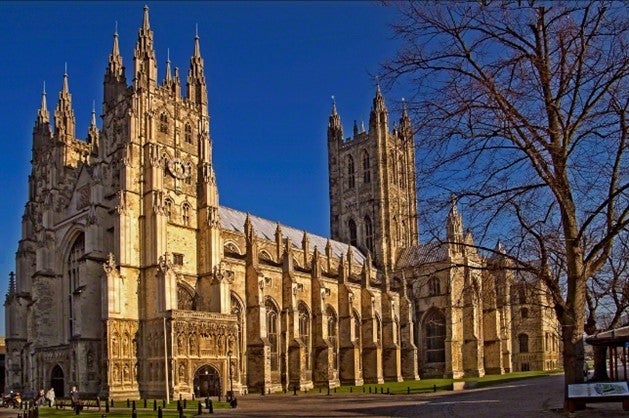
Canterbury Cathedral. Canterbury, England c. 1070
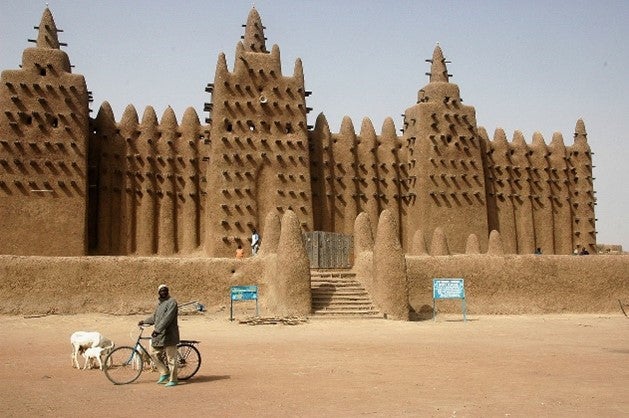
Great Mosque of Djenné, Mali, Africa. 13th century and later rebuilding.
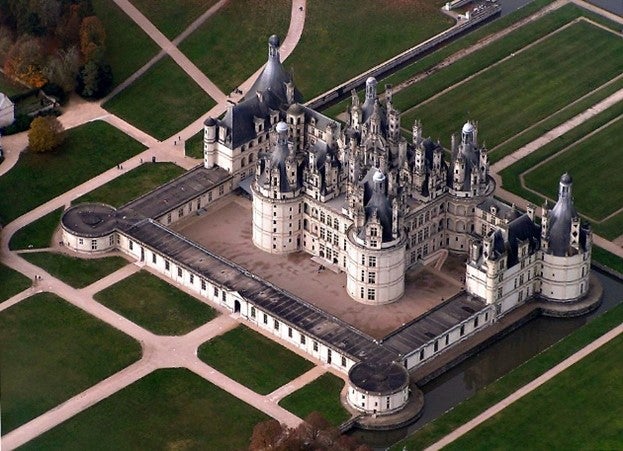
Domenico da Cortona and possibly Leonardo da Vinci. Château de Chambord. Chambord, France. 1519-1547.
ARTH 249 – History of Architecture investigates major works of architecture from a broad array of cultures and locales from the ancient era to 1750. Egyptian, Greek, Roman, Medieval, Renaissance and Baroque monuments will be analyzed within their cultural context. African and Asian case studies will also be incorporated within this global survey. Students will gain familiarity with the language of architecture and its diverse materials, function, styles and meaning. Issues relating to patronage, cross-cultural diffusion and urban planning will also be addressed. Included among the many structures we will investigate are the Near Eastern ziggurat, ancient Roman baths, the cathedrals of England and France, the Italian villas of Palladio and the buildings of Versailles. Students will work both independently and in teams throughout the semester. No prior architecture knowledge is required or assumed.
This course is taught by Stephanie Rufino.
History of Photography
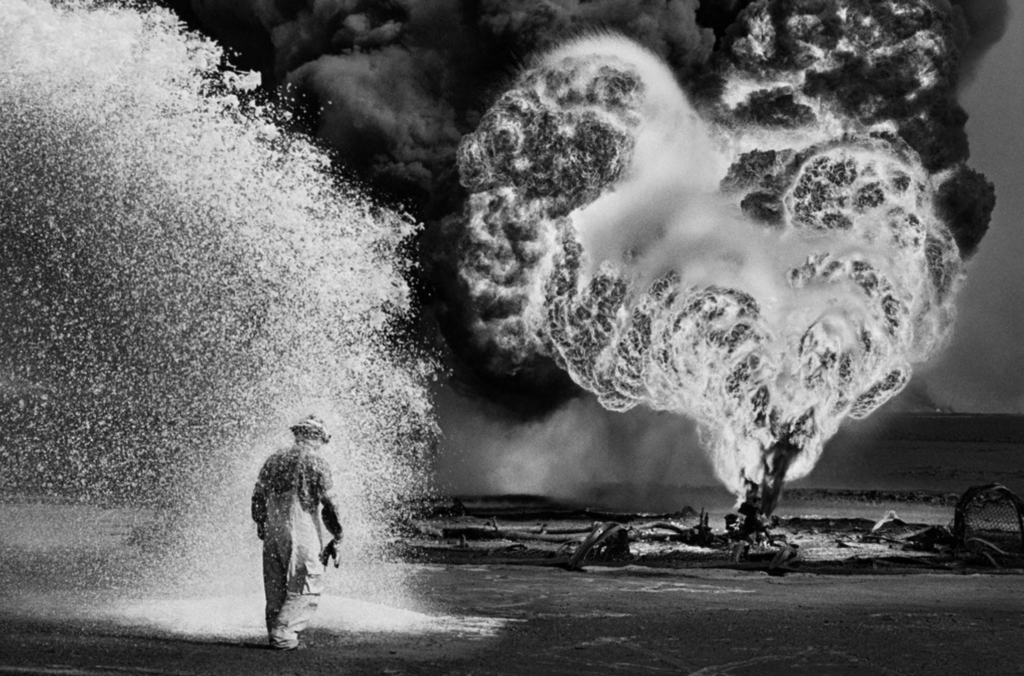
Sebastião Salgado, When the Oilfields Burned (Iraq, 1991)
ARTH 256 — History of Photography surveys the history of photography, and lens-based media generally, from its inception in 1839 through the late 20th century. Lectures are generally chronological, covering important developments—from the calotype to street photography, to drone warfare and everything between—but we will also frame our conversations around thematic problems. These include problems of equity and representation, photojournalist ethics, looking and the gaze, and the shift from analog to digital techniques.
This course is taught by Ian Bourland.
Chinese Art
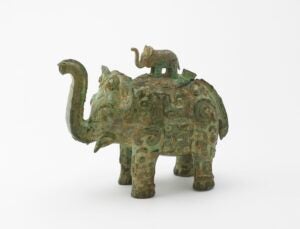
Lidded ritual ewer in the form of an elephant with masks and dragons, Shang Dynasty (China), ca. first half 11th century BCE, bronze, Freer Gallery of Art, F1936.6a-b
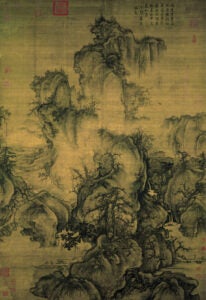
Guo Xi, “Early Spring,” Northern Song Dynasty (China), 1072, hanging scroll, ink and light color on silk, National Palace Museum, Taiwan
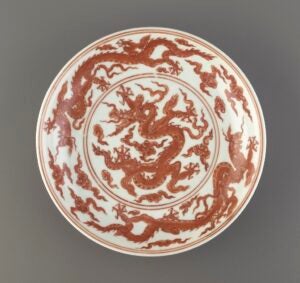
Dish with design of dragons and clouds, Ming Dynasty (China), Xuande Reign, 1426-35, porcelain with cobalt under clear glaze, enamel over glaze, Freer Gallery of Art, 1965.4
ARTH 271: Chinese Art This lecture course surveys the art and architecture of China from the prehistoric period to the present-day. The unfolding of various artistic and architectural traditions in China was marked by regional developments, the emergence of different religious and philosophical systems, as well as by interactions with China’s neighbors. The topics that we will study include: bronze ritual vessels, Buddhist cave shrines, landscape painting, ceramics for domestic use and international trade, gardens and literati or gentlemanly culture, the impact of the Jesuits upon Chinese court arts, and the response of modern artists to traditional artistic techniques as well as to the dramatic upheavals of 20th century China. Emphasis will be placed upon the interrelationship between the visual properties of art objects and their materials and techniques, as well as the historical, social, and cultural contexts of their production. No prior knowledge of Asian art is required or assumed.
This course is taught by Professor Michelle Wang.
Race & Color in Latin American Art

Anonymous, Casta Painting, 18th century. Oil on canvas, 148 × 104 cm, Museo Nacional del Virreinato, Tepotzotlán, Mexico

Miguel Cabrera, 4. From Spaniard and Black, Mulatto Woman (4. De español y negra, mulata), 1763. Oil on canvas. Private Collection, Mexico
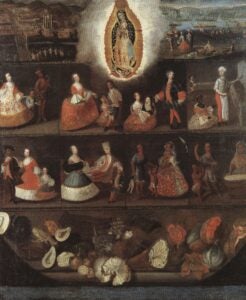
Luis de Mena, Virgin of Guadalupe and Castas, 1750. Oil on canvas, 119 x 103 cm. Collection of the Museo de America, Madrid
ARTH 420, Race & Color in Latin American Art examines the history of portraiture and casta paintings in Latin America from the late sixteenth through the early nineteenth century. The course primarily focuses on casta paintings—a unique pictorial genre that appropriated as its subject the issue of race and miscegenation. By studying casta paintings and portraits commissioned by the Spanish elite, the course studies the pivotal role that art played in maintaining and exacerbating inequalities based on color, race, and ethnicity. During Viceregal times, concepts of ethnicity, race, and identity were fundamental elements of social stratification based on physical characteristics, sumptuary rules, and statutory and customary laws that decreed the place of an individual in a certain casta based exclusively on the Spanish statute of limpieza de sangre (“purity of blood”). Placing particular emphasis on historical, social, cultural, economic, and political aspects, the course introduces students to major theoretical concepts of belonging, inclusion, and exclusion. Moreover, the seminar aims to understand the construction of racial identity in the viceroyalties and challenge the intersection of art, race, and class in Latin America.
This course is taught by Professor Andrea Gallelli Huezo.
Blackness and Aesthetics
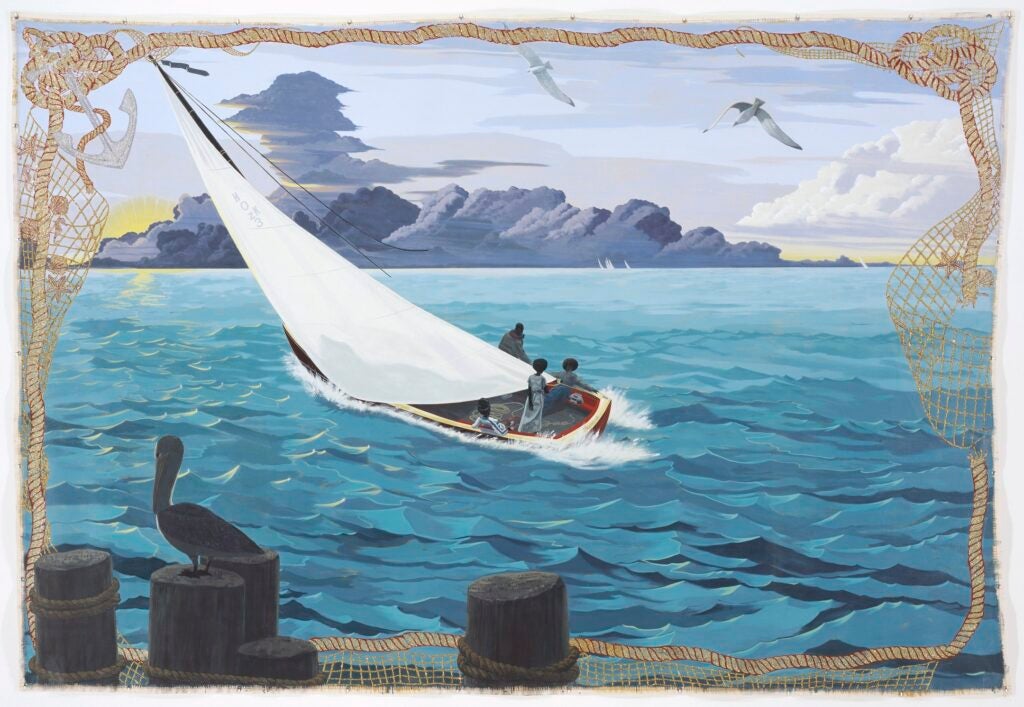
Kerry James Marshall, Gulf Stream (2003)
ARTH 455 — Blackness and Aesthetics considers the ways in which blackness—in both a racial and chromatic sense—has operated in the history of visual culture and its critical-aesthetic discourses. On one hand, this means questions of “value” and symbolic meaning in the construction of “western art history,” and the myriad formulations of specific Black or Black Atlantic arts; on the other hand, we will consider the ways in which debates around identity and political collectivity effect forms of practice that challenge the boundaries of location, medium, memory, and cultural politics.
This course is taught by Professor William Bourland.
Post-Impressionism
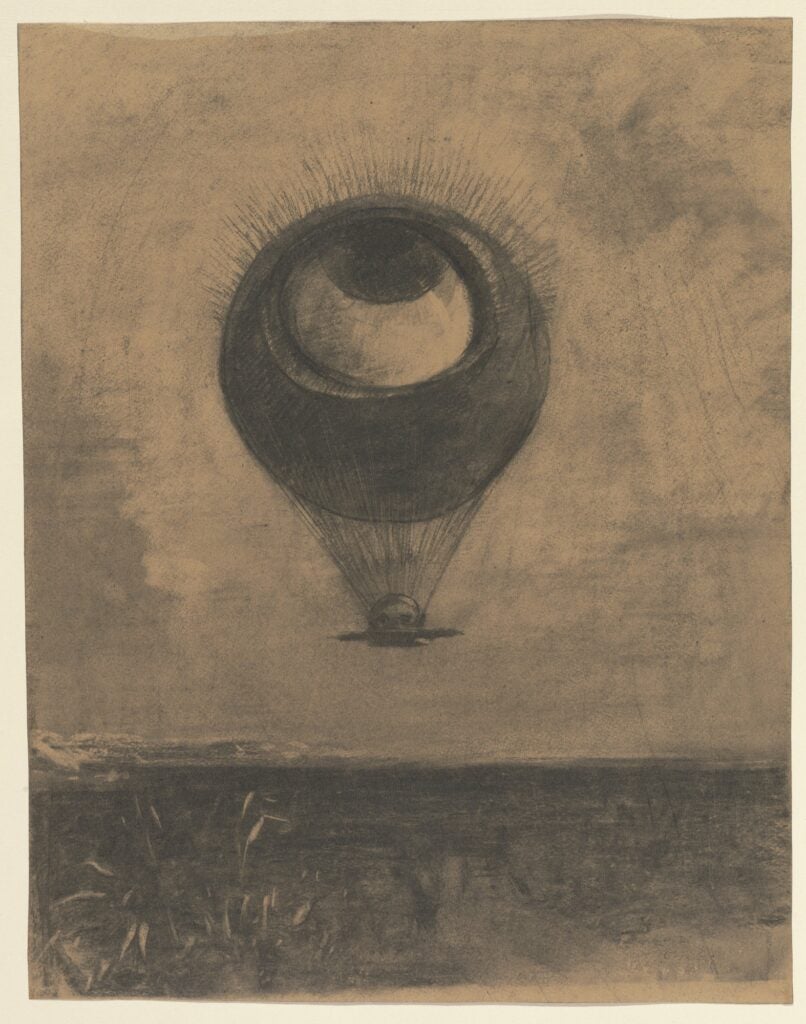
Odilon Redon, Eye-Balloon, 1878, charcoal (MoMA)
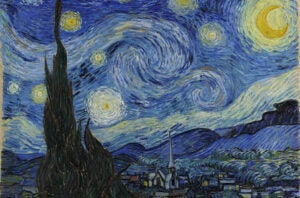
Vincent van Gogh, The Starry Night, 1889 (MoMA)
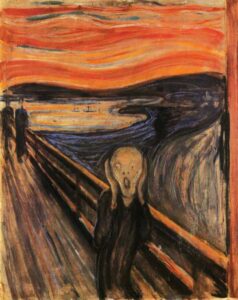
Edvard Munch, The Scream, 1893 (NG Oslo)
ARTH 447 — Post-Impressionism The English critic Roger Fry coined the term “Post-Impressionism” in 1906 as a way of referring to the younger generation of avant-garde artists who came to the fore in the wake of the Impressionists. By the 8th and last Impressionist exhibition in 1886, it was clear that the participants had largely rejected what they viewed as the superficial Impressionist goals of capturing the ever-changing phenomena of the external world. Many of the so-called “Post-Impressionist” artists – who were not a coherent group and did not adhere to a particular style – instead turned inward, seeking strategies for visualizing their experience of ineffable products of the mind and the imagination. In this seminar, we will explore how such pursuits manifested themselves in the paintings of Paul Gauguin, Vincent van Gogh, Georges Seurat, and Paul Cézanne, among many others. While creating many of the great monuments of western European painting, these artists paved the way, both individually and collectively, for twentieth-century modernism.
This course is taught by Professor Elizabeth Prelinger.
Asia/America
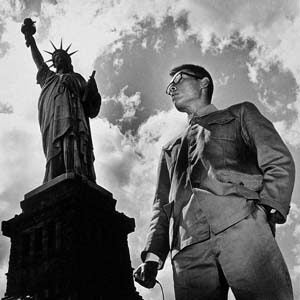
Tseng Kwong Chi, “East Meets West: New York, New York,” 1979, gelatin silver print, one of an edition of five, Rubell Museum
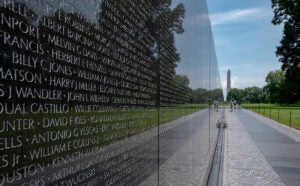
Maya Lin, Vietnam Veterans Memorial, Washington, DC, dedicated on 13 November 1982

Chiura Obata, “Evening Glow at Mono Lake, from Mono Mills,” 1930, color woodcut on paper, Smithsonian American Art Museum, Gift of the Obata Family, 2000.76.10
ARTH 469 — Asia/America This seminar examines art and design produced by people of Asian descent in the Americas, broadly defined, from the mid-19th century to the present day through a transnational lens. We will foreground labor, capitalism, American imperialism, and war as defining characteristics of their lived experiences and artistic production. Previous histories of Asian-American art have focused either on narratives of exclusion due to the immigration bans of the late 19th to early 20th centuries, or on the cultural identity of the Asian diaspora. Instead, we will insist upon the primacy of the contributions made by artists, designers, and architects of Asian descent to American art and culture, acknowledging that the history of American art and design cannot be told without a full accounting of the work of Ruth Asawa, Manuel Ocampo, Tseng Kwong Chi, Maya Lin, and many others.
This course is taught by Professor Michelle Wang.
Senior Thesis
ARTS 490, Senior Thesis: By arrangement with a faculty adviser, majors may write a senior thesis on an art historical topic of their choosing. The thesis is optional, but can serve as a capstone course that prepares students for future professional or graduate work.
Art & Museum Studies Courses
Collections Management

Proper handling of objects

Understanding the objects in the collection
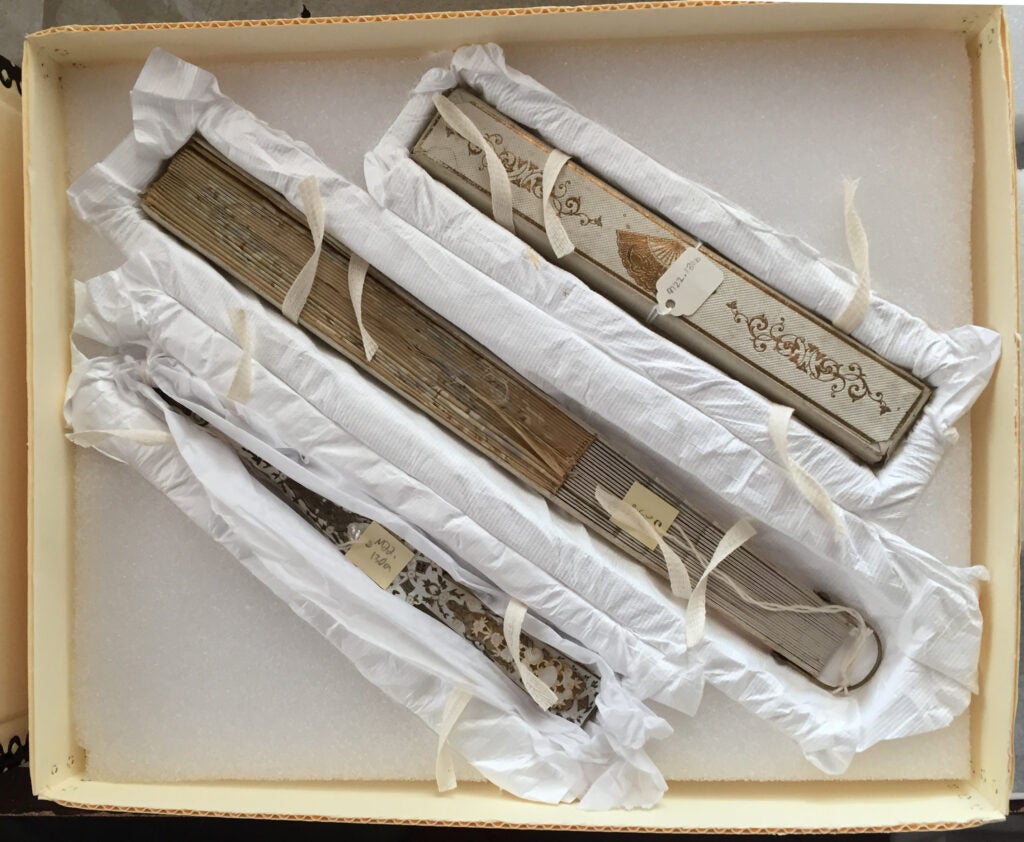
Proper storage techniques
AMUS 510 — Collections Management focuses on general museum concepts and procedures as they relate to collections (objects and their documentation) and their management (e.g., preparation, preventive maintenance & conservation, housing, problem-solving) as a whole. The course objectives are to introduce the participants to basic care and preservation of collections as well as a basic understanding of the history and current status of the governance of cultural materials. By the end of the course, participants should understand the definition and role of collections within a museum context; understand the philosophy of cultural preservation and the meaning of cultural patrimony; understand the importance of collection ethics and the role of collections within museum accountability and accreditation programs; understand the importance of a collections management policy, its development, content, and application; and how such a policy governs the daily activities within a museum’s collections.
This course is taught by Professor Jerry Foust.
Museums and Social Justice

Decolonize This Place
AMUS 515 — Museums and Social Justice What is the role of museums in fostering social justice? How can museums become more just institutions themselves, and how can they encourage us to treat one another more fairly? In this course, we will examine concepts such as acknowledgement, neutrality, empathy, equity, and decolonization as they relate to museum mission, exhibitions, collections, education, and staffing. We will take as case studies the Smithsonian’s National Museum of Natural History, National Museum of the American Indian, and National Museum of African American History and Culture. Through a scaffolded research paper and presentation, as well as shorter assignments and group work, students will learn about museum practices and consider how those practices can better serve society. This course will include museum site visits that will take the place of class meetings. This course is designed for undergraduate as well as graduate students, and Juniors and Seniors may register with the permission of their dean and the instructor.
This course is taught by Professor Lisa Strong.
Museum Administration
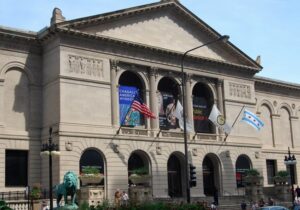
Art Institute of Chicago

Hillwood Estate, Museum and Gardens
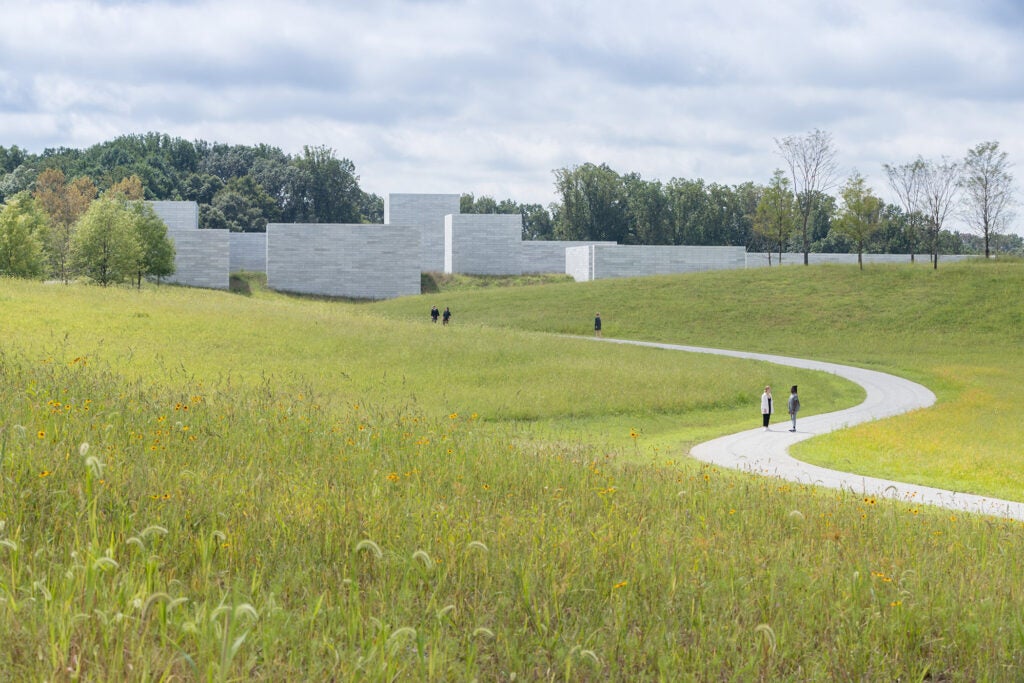
Glenstone Museum
AMUS 550 — Museum Administration The many facets of leadership and management in a museum setting are explored through topics including nonprofit organization governance, board/staff relations, strategic planning, financial and human resources management, and diverse community stakeholders. The course introduces the basic components of financial statements of special interest to government oversight agencies and funders. Students develop and write grant proposals with corresponding project budgets. Course sessions on institutional planning address emergency management scenarios. Guest speakers share unique expertise gleaned from hands-on experience in museum administration roles. Students learn about current and new management tools to support how museums respond to social change through understanding organizational and community contexts, informed decision-making about collections, interpretation and programming, and garnering public and private support.
This course is taught by Professor Carma Fauntleroy.
Spring Internship
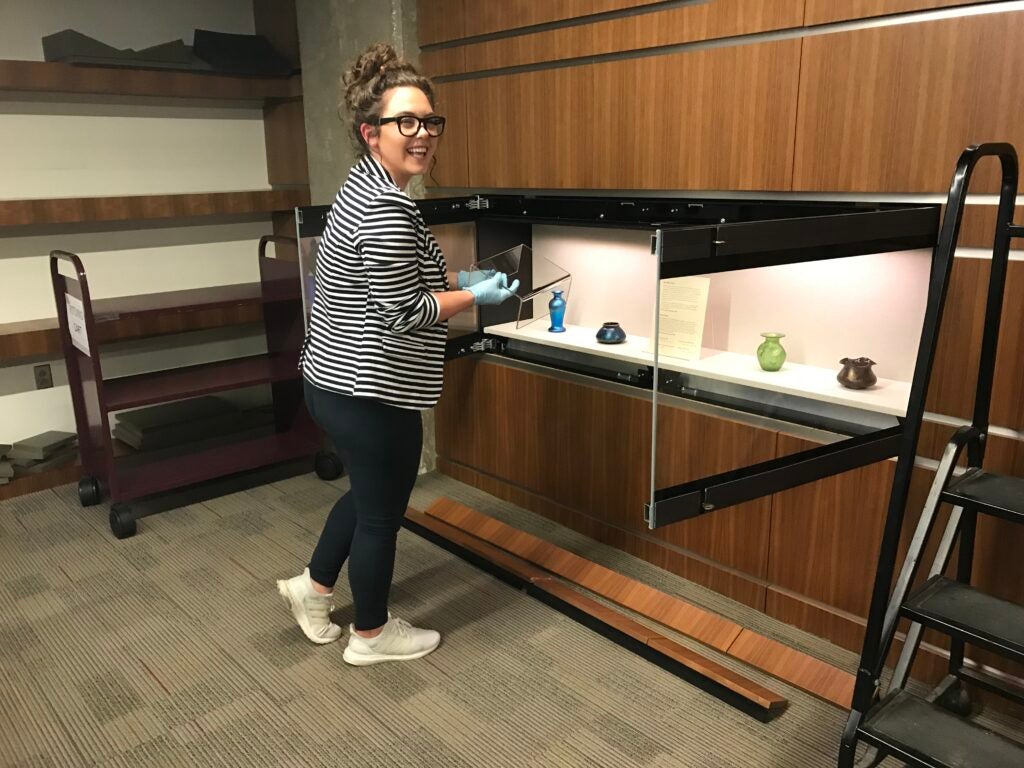
Frances Williams curating the Art Collection, Booth Family Special Collections
AMUS 531 Spring Internship — Internship in museums or arts organizations.
